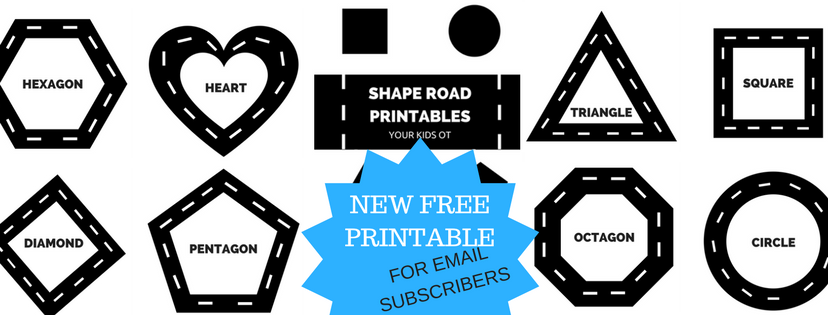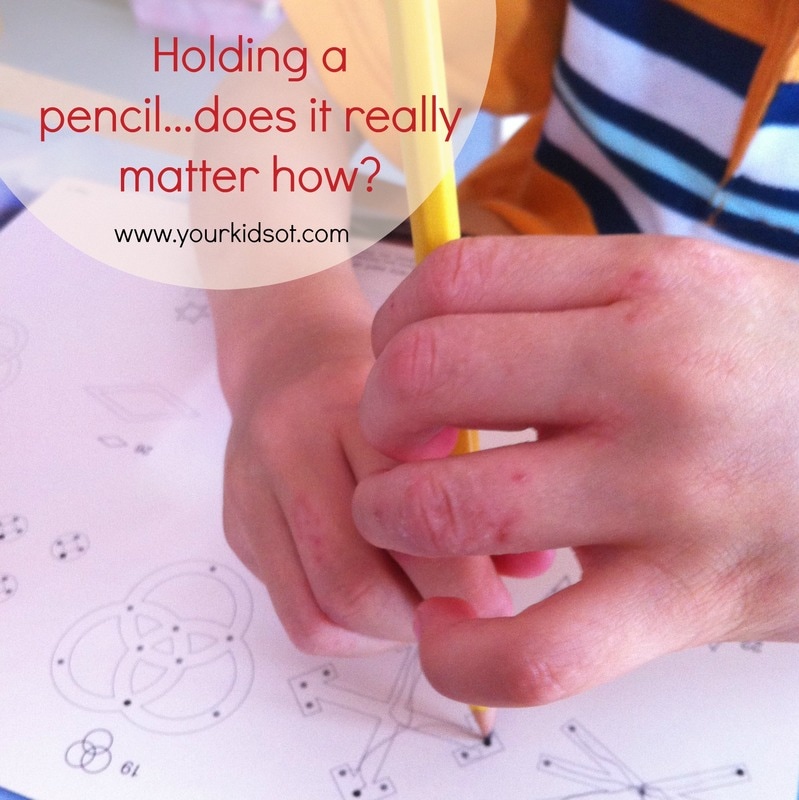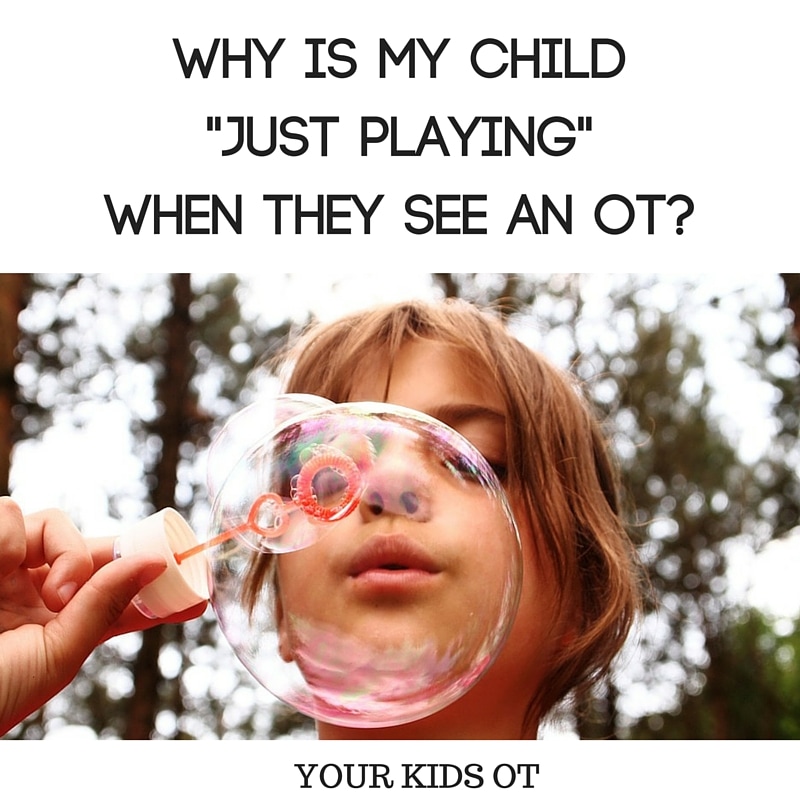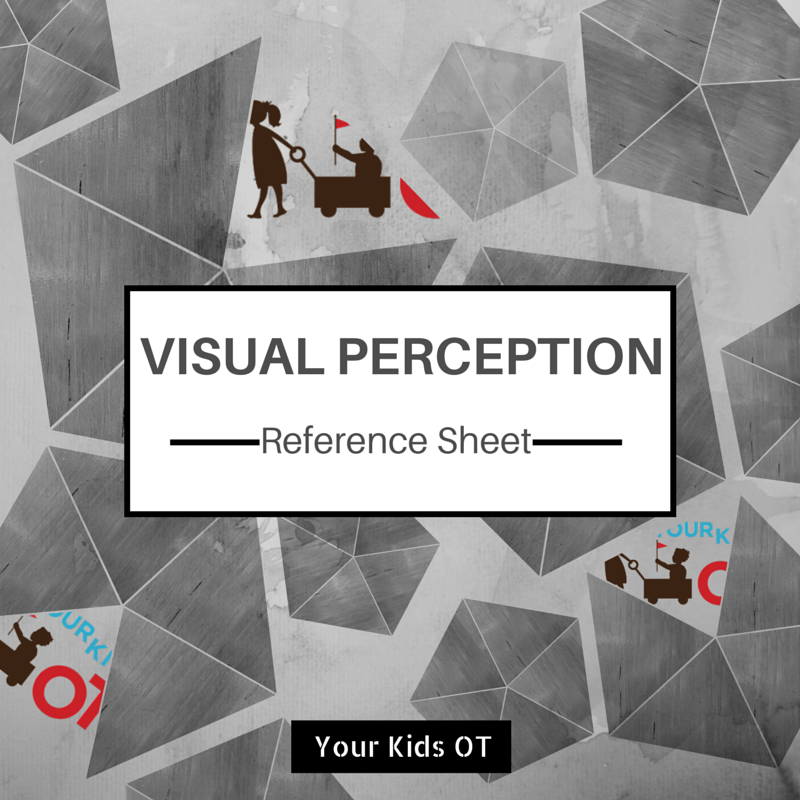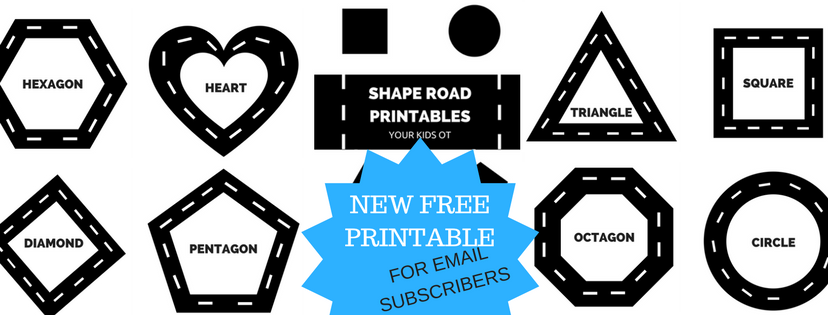|
Toys are a BIG thing for occupational therapists! Maybe we are just BIG kids that never quite grow up (Peter Pan style)? We get excited when we see new products released. We get thrilled when we see old products re-used or re-purposed. We are nostalgic about our old toys. We are curious to see how children "play". We love seeing children use their imaginations and interact with each other. We are fascinated when children use "non-toys" as "toys"! AND We love to see toys which help guide child development! This may be fostering curiosity, problem solving, creativity, cause and affect.... or developing skills (fine motor, gross motor, visual motor, sensory motor, etc)! But what fine motor skills are important with pencil grasp and handwriting? As occupational therapists, we are looking for more than a child's ability to play with Legos or pick up sultanas! These are the common examples that get shared with us in relation to fine motor skills. A child's ability to hold a pencil (ie. pencil grasp) and then use the pencil fluently and effectively may be influenced by a number of skills. Before we look at the hand and fine motor skills, we also need to consider the development of bilateral coordination skills (using both sides of the body in a coordinated way), being able to stabilise the body during writing and having the right posture (read about this at Miss Jaime OT). Important fine motor skills for pencil grasp and handwriting. • Pincer grasp - This is the neat "pinch" achieved between the thumb and index finger. Read more about this HERE. • Thumb opposition - This refers to the ability of the thumb to rotate and reach to touch all other fingertips of the same hand. Read more about this from The Inspired Treehouse HERE. • Palmar arches - This refers to the arch formed when we "cup" our hands and is related to the loops of blood vessels which are found in our hands. Read more about this from Irvine USD Special Education Preschool HERE. • Separation of the two sides of the hand - This the use of the thumb, index and third fingers of the hand whilst maintaining stability in the fourth and fifth fingers of the hand. Read more about this HERE. • Wrist stability and extension - This is the position of the wrist so that it is resting on the table and slightly extended so that the fingers can be used to control the pencil. This is one of the reasons as occupational therapists, we love to encourage working on a vertical surface or use of a slope board if necessary. • Hand strength - This refers to the contraction of the hand muscles to grasp a pencil to control it without fatigue or pain. Read more about hand strength HERE. • In-hand manipulation - This refers to the ability to move items around in the hand using precise finger movements and includes translation, rotation and shift. Read more about this in THE HANDWRITING BOOK. This is a list of MY favourite toys that help children in the fine motor skills they need for an efficient pencil grasp and fluent handwriting. 1. Wind-up toys. 2. Bubble Wrap 3. Travel-size toys (eg. connect four, battleship, mastermind) 4. Stick toys (eg. Kerplunk, Pop-up Pirate) 5. Wikki stix 6. Tweezer/tong games (eg. avalanche, Operation, ) 7. Squeeze Toys (eg. bath toys, claw activaters, popper toys, roll tongue animals etc) 8. Beads and lacing toys (eg. FILO, HAPE wooden beads) 9. Dice games (eg. Snakes and Ladders, Monopoly, etc) 10. Trigger finger games (eg. Hungry Hippos, jumping frogs) 11. Finger Lights 12. Playdough or putty games (Refer HERE for ideas!) 13. Finger puppets 14. Spinning tops 15. Elastic Band Toys (eg. loom bands, Thumbs up, etc) 16. Toys with small suction pads (eg. Squigz, Stik Bot, Oogi) 17. Screwdriver, nuts and bolts toys 18. Eye droppers 19. Mosaic tile games (Moza Blop - see photo) 20. Peg boards 21. Marble games (eg. Tricky Fingers, marble runs, marble maze) 22. Magnetic boards (eg. Magnatabs, Marbletick, magnetic drawing boards) 23. Stamps with ink pads 24. Stickers 25. Trigger toys (eg. small water pistol, pinball) Don't forget to look around your home for "loose parts"! "Loose parts" might be anything from buttons, toothpicks, pom poms, paper clips, sticks, elastic bands, coins, etc. These make great "tools" for fine motor play. Use them over my "Shape Roads" (which you can receive by subscribing HERE) or "Letter Roads" (read about this HERE). What are your favourite toys for the development of fine motor skills?
Disclosure: Affiliate links are included in this article to promote products that I recommend. Reviews and endorsements of products will only be made based on my expertise and personal opinion; and deemed worthy of such endorsement. The opinions shared in sponsored content will always be my own and not that of the advertising company or brand. You may also like:
"Different, Not Less" Dr Temple Grandin.
Dr Temple Grandin is internationally recognized as a renown scientist and spokesperson about her own life as a person with autism. She seeks to help others to understand that people with autism may have differences which make them unique and special. Dr Grandin shares her own experiences so others can gain insight; demystifying what it means for someone to have autism, helping to remove preconceptions and prejudices. "The Girl Who Thought in Pictures: The Story of Dr. Temple Grandin" is a wonderful picture book written by Julia Finley Mosca and illustrated by Daniel Rieley. Presented as a children's book with rhyming couplets and engaging pictures, the book outlines Dr Grandin's life including her struggles in childhood (such as speech, regulating her emotions, social interactions with teachers and peers). The reader journeys with Dr Grandin as she discovers her own unique features and recognizes that she is "different, not less". Whilst the book provides a simplified version of Dr Grandin's life, it provides an age-appropriate introduction to Autism for children to understand. It introduces concepts and themes about visualization (seeing in pictures), difficulties with communication and social skills, acceptance of support, facing adversity, accepting one's weaknesses and strengths, problem solving and learning from mistakes. All children will be able to relate to these themes. We learn how Dr Grandin's perseverance and determination helped her to "march right through that door", leaving readers with a powerful message to embrace their unique characteristics and to stand tall when facing challenges or new experiences. At the end of the book, there is a letter by Dr Grandin to the reader, some fun facts and a timeline of her life. These supplements help the adult reader to understand more about this incredible woman, providing more of the "back story" for those who may be reading about Dr Grandin for the first time.
TheWorld Health Organization (April, 2017) report that the prevalence for autism is now 1 in 160 children. This means that most children will know of a child who has autism; whether this is within their own family, their school environment or local community. Despite the prevalence of autism, there continues to be many prejudices and preconceived ideas about autism in our society. Books such as "The Girl Who Thought in Pictures" are important for educating both our children and society at large, introducing them to autism in a way that can be related to through the life of Dr Temple Grandin.
I highly recommend this book to families, therapists and schools. I have created a set ofprintable resources to accompany this book which includes writing prompts for a character study, story re-tell, an examination of the themes and a word find puzzle. These printables are FREE for a limited time (offer ends October, 2017), so download them today and buy the book!
Also available from our TPT store!
Have you read "The Girl Who Thought in Pictures: The Story of Temple Grandin"? I would love to hear what you think of the book!
Disclosure: This product was gifted to Your Kids OT for the purposes of a review. Reviews and endorsements of products will only be made based on my expertise and personal opinion; and deemed worthy of such endorsement. The opinions shared in sponsored content will always be my own and not that of the advertising company or brand. Affiliate links may be found throughout this website in advertising. This means that if you follow through with a purchase from these links, Your Kids OT will receive a percentage of the sale.
You may also like:
Today on the blog, I would like to introduce Kim who is an occupational therapist whom I "met" on Instagram! She shares her favourite toy and activity ideas to support learning through play on IG and her website Preferred Therapy Toys. Kim is sharing with us about "ocular motor skills" and she has some wonderful activity suggestions to address these skills! I'm looking forward to trying these out with my OT kids this term! Thanks so much Kim for sharing this with the YKOT readers! As an Occupational Therapist working in the school setting, we support many children with their ocular motor skills, as these skills are important for reading and writing development. Ocular motor skills are your "eye movement skills" including:-
I also like to look at "visual fixations" - ability for eyes to maintain visual attention to a stationary item. In the school environment, ocular motor skills are important to address because they are foundational skills for visual motor skills (hands and eyes working together to complete tasks) and also are essential when reading, writing and copying from the board. If your child seems to be having difficulty with their vision/eye skills, I would first recommend having their vision checked by an optometrist or ophthalmologist, to rule out the need for glasses/acuity issues. Here are some activity ideas to work on ocular motor skills; some of these activities address visual motor skills as well, as they often go hand in hand. 1. Popsicle Stick Reading - Put different colored circle stickers, or draw circles with different colors down a popsicle stick (see picture below) and have student hold this vertically. They can say the colors they see in order from top to bottom, you can also then turn the stick sideways and read from left to right. Try to have kids keep their head straight and not use their finger to hold their place (only hold finger at tip of popsicle stick). You can work up to letters or even sight words as well with this activity and start with wider popsicle sticks and move to thinner popsicle sticks. 2. Ball activity with letters on ball - Get an inexpensive medium sized ball (I usually get mine at the dollar store) and write letters on it (see picture below). Put a target on a wall (could mark an X with painters tape or use a large sticker) and have your child toss the ball with both hands to hit the target. Then when he/she catches the ball, say the first letter they see. you can also use the ball to have the child move the ball to find the letters of the alphabet in order. This activity works on visual motor skills with tossing/catching the ball as well as visual fixations and saccades. 3. Scarf Toss/Catch, Popping Bubbles, Balloon Volleyball - These fun activities are great for younger kids or children that have trouble with ball skills. These activities work on visual tracking and visual motor skills/eye-hand coordination in a play based environment. 4. Alphabet or Number Sequencing Activities - I love using the alphabet or numbers, either by using puzzle pieces or putting numbers/letters on sticky notes and spreading them around on the wall (or floor for puzzle pieces). I then have my students find these in order. This works on visual scanning and sequencing. 5. Slap Tap Game - This is a fun yet tricky game that takes some motor coordination as well. Movements are complete in correlation with the letter presented: p - right arm up b - stomp right foot q - left arm up d - stomp left foot These letters are then placed in rows and students complete these together reading from left to right i.e.: p b q d d b p q You can also make also make it trickier and do two body part motions together (see picture below) or you could incorporate music with this activity. 6. Ipad/Tablet apps -
8. Worksheets - Mazes, dot to dots and word searches are great activities for working on visual motor and ocular motor skills. There are many free printable worksheets available in these areas. Accommodations - Accommodations are supports that help your child to complete a task more easily with use of adaptive strategies. If your student has trouble with copying information from the board, offer copying from near point instead and use a marker item to hold place when copying (ie. eraser, paper clip, tongue depressor). When reading, you can have your child use their finger or index card to help with keeping place. I hope this information has been helpful and that you have found some new activity ideas for ocular motor development. :) By Kim Heyer (OTR/L)
You may also like:
"5 year old Cody writes so lightly that we can't read his work! He doesn't seem to know how hard to push on the pencil and is just not interested in writing or drawing!"
Cody's mum is confused because he loves playing with Lego and didn't seem to have a problem with his fine motor skills. She is worried that he is just not going to cope with "big school" and all the writing that needs to happen there. Too little pencil pressure! Why do some children press "too lightly" when writing? 1. Sensory Processing or Modulation Difficulties. Everyday, we receive information from our senses through our eyes, nose, mouth, ears, skin and joints. We use this information to interact with the people and the environment around us. Each of us process this sensory information in different ways and our brains need to organise this information so that we can function in everyday situations such as in the classroom, at home or the playground. Proprioception is our "sense" which informs us of about our own body, how our body parts relate to one another, how much our muscles stretch, the speed of our movement in space, our timing as well as the amount of force our muscles produce.* Poor body awareness and proprioception may result in difficulties manipulating objects such as pencils for writing. Children may have a weak grasp and have difficulties grading the amount of force to apply (ie. too much or too little pressure to the pencil). An over responsive child may avoid the "feel" or touch of objects. They may avoid or lightly "hold" pencils or other writing tools. This makes it difficult to apply adequate pressure to the page when writing or drawing. A child with poor registration may have difficulty "registering" how the pencil feels in their hand. They don't know how to control the pencil and it is not an extension of movements made by the hand. 2. Weak Hand and Finger Strength Children with weak hand and finger muscles may have difficulty grasping a pencil effectively or for a sustained period of time. They may have difficulty applying enough pressure, write quickly enough, write for a long enough duration or write enough on the page. These children may swap hands regularly or just drop the pencil for "no reason". Read more about hand and finger strength in a recent article.
Tried and Tested OT tricks when a child presses "too lightly" when writing!
OT intervention for pencil pressure provides a child with ways to be aware of their pencil pressure, practise techniques to increase their force when it is too light and provides ways to compensate when they struggle to grade their movements. 1. PREPARE THE BODY FOR WRITING Before running a race, we need to prepare our body by training our muscles. We need to stretch, practise aspects of the race, be aware of the environmental conditions and know what is involved with running the race. In handwriting, we need to also prepare the body and understand what is required. Activities which provide "heavy work" or proprioceptive input to skin, muscles and joints can prepare the body for writing. This may include hanging from monkey bars, jumping on the trampoline, wiping a whiteboard clean or lifting school chairs onto the table. Find more"heavy work" ideasHERE. There are also ways to increase the "heavy work" and proprioceptive input to fingers and hands prior to writing. This may include squeezing some play dough, using tongs or tweezers to transfer items or doing a variety of finger exercises. Find my ideas for "heavy work for little fingers" HERE and if you didn't link over to my recent article about building hand strength, then you can find that HERE for more ideas for preparing hands for writing . 2. HELP CHILDREN TO BE AWARE OF THEIR PENCIL PRESSURE a) Change the Writing Tool
3. HELP CHILDREN TO INCREASE THE PRESSURE APPLIED TO THE PAGE a) Change the Writing Tool
4. HELP CHILDREN TO COMPENSATE FOR NOT APPLYING ENOUGH PENCIL PRESSURE. a) Change the Writing Tool
Are you concerned about your child applying too MUCH pressure on the page? Is your child breaking pencils or pushing so hard they make holes in the page? Read "Why Your Child Presses Too Hard When Writing" from Miss Jaime OT!
What are your tried and tested tricks for helping children who have difficulty with pencil pressure? How would you advise "Cody's mum"?
* Kranowitz, C. S. (2011). The out-of-sync child: recognizing and coping with sensory processing disorder. Place of publication not identified: Paw Prints.
You may also like:
Last week we looked at the gross motor skills involved with page stabilization. If you missed it, catch up on it here (Gross motor skills needed for page stabilization during writing)!
But what if your child is still struggling to hold their paper whilst they write or draw? I was recently introduced to the Stay Put Mat: Non Slip Writing Aid! The Stay Put Mat:Non Slip Writing Aid was designed by a mom to help manage slipping papers on a table. The Stay Put Mat:Non Slip Writing Aid consists of a magnetic frame made on a non-slip base. It is durable and lightweight and easy to transport around (so important for a mobile OT)! I have been testing the Stay Put Mat:Non Slip Writing Aid in my OT sessions and these are my favorite ways to use this non-slip mat!
I especially love how the page does not get marked with use in the Stay Put Mat. There are no tape marks or blue-tak stains. There are no rips, tears or creases either!
Who would benefit from use of the Stay Put Mat:Non Slip Writing Aid?
The Stay Put Mat:Non Slip Writing Aid provides an innovative attractive way to compensate for difficulties with page stabilization. It would benefit:
Occupational Therapists will find this mat invaluable! For more information bout the Stay Put Mat: Non Slip Writing Aid, visit the website "STAY PUT MAT"! Have you tried this mat?
Disclosure: This product was gifted to Your Kids OT for the purposes of a review. Reviews and endorsements of products will only be made based on my expertise and personal opinion; and deemed worthy of such endorsement. The opinions shared in sponsored content will always be my own and not that of the advertising company or brand.
You may also like:
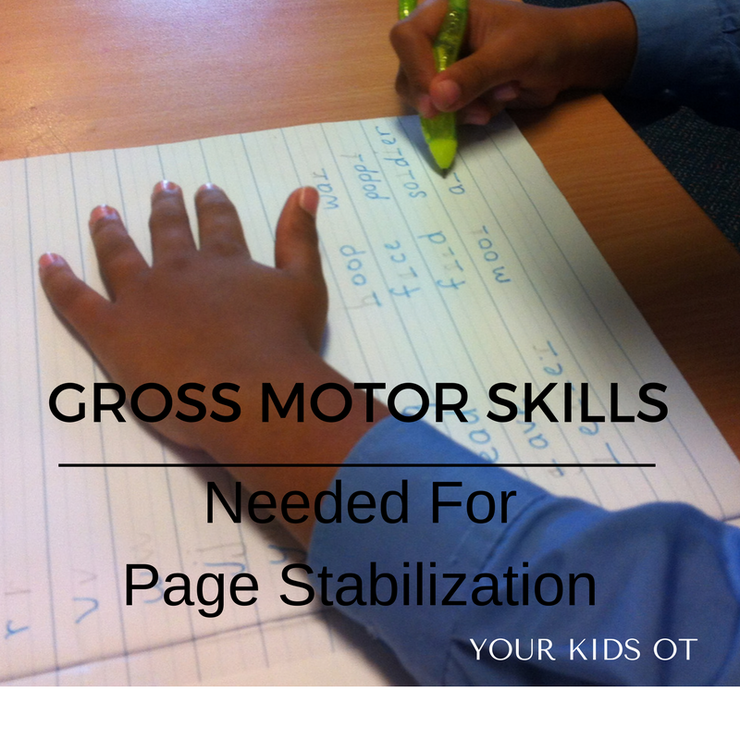
Affiliate links are used throughout this website to promote products I love and recommend. I receive a commission if any purchases are made through these links. Please see my disclosure policy for more details.
Put your left hand on the page and have your right hand do the "writing".
Hold the page not your head. Don't let your page wiggle! Do these phrases sound familiar to you? There are some kids who can't seem to hold their page still on the table. The paper flies off the table, moves as it is being written on or even gets crumpled under their hand. This makes drawing and writing really tricky! Ideally at the table, children use their dominant hand to hold a writing implement and use their non-dominant hand to stabilize the page they are working on. They provide just enough pressure so that the page does not move. The dominant forearm also rests on the page with their fingers and hands controlling the pencil. Did you know that the ability to stabilize a page on the table may be due to core muscle weakness, poor bilateral coordination and poor shoulder stability? How??? Core Muscle Weakness Core muscles can be considered "as the sturdy central link in the chain connecting your upper and lower body".* Core muscles describe both the muscles which assist with stability as well as those which enable trunk movement. ** What you might see in the classroom:
Core muscle strength can be developed through a wide range of activities. Organized sports such as swimming, basketball, gymnastics etc will assist with fitness and regular strengthening activities. Children can also develop core muscle strength through traditional exercises such as sit ups, push ups, holding a plank position, squats to stands, etc. Through play activities, children can build core strength without realising it. These might include using a hula hoop, pushing heavy wagons, crawling through tunnels, climbing on ropes, jumping on a trampoline, pulling a sibling on a towel, an obstacle course of pillows, relays in the yard picking up various objects to carry, riding a bike, etc. Bilateral coordination Bilateral coordination/integration is the ability to use both sides of the body at the same time in a coordinated way. What you might see in the classroom:
Read more aboutbilateral coordination HERE or obtain a copy of the bilateral integration reference sheet with over 50 activity suggestions HERE !
Shoulder Stability
Shoulder stability refers to the ability to contract (pull together) the muscles on either side of the shoulder joint to hold the shoulder steady. This allows the arm to be held in different positions while the forearm and hand do an activity. *** What you might see in the classroom: A child with poor shoulder stability may use their whole arm to control their pencil rather than using their fingers.
Shoulder stability can be developed with tummy time and crawling (for all ages)! Read more about this HERE! For further activity ideas to assist shoulder stability have a look at OT MOM LEARNING ACTIVITIES SHOULDER GIRDLE EXERCISES FOR KIDS! Do you have a child who struggles to stabilize the page on the table during writing? Do they have difficulties with any of these gross motor skills?
Disclosure: Affiliate links are included in this article to promote products that I recommend. This means that if you follow through with a purchase from these links, Your Kids OT will receive a percentage of the sale. Reviews and endorsements of products will only be made based on my expertise and personal opinion; and deemed worthy of such endorsement. The opinions shared in sponsored content will always be my own and not that of the advertising company or brand.
References:
* Publications, H. H. (n.d.). The real-world benefits of strengthening your core. Retrieved February 07, 2017, from http://www.health.harvard.edu/healthbeat/the-real-world-benefits-of-strengthening-your-core ** Khadir, S. A., Knight, K., Bras, S., Rhule, V., & Pagare, V. Core stability - Physiopedia, universal access to physiotherapy knowledge. Retrieved February 7, 2017, from http://www.physio-pedia.com/Core_stability *** Royal Children's Hospital Melbourne, 2005. Occupational Therapy Kids Health Information: Shoulder Stability and Control. Retrieved February 07, 2017, (n.d.) from http://www.rch.org.au/uploadedFiles/Main/Content/ot/InfoSheet_F.pdf
You may also like:
Today I would like to introduce the lovely Fi Morrison from "Mumma Morrison" as a guest blogger to Your Kids OT. Fi is a mother to a gorgeous baby boy (check out her Instagram feed to meet her bub) and a primary school teacher. I recently discovered that Fi taught one of my nieces a few years ago! My niece LOVED being in Mrs Morrison's class! Today Fi is helping us with 5 ways to promote social skills with children! This is a timely article with the recommencement of school here in Australia! Thanks so much Fi for writing this article!
I was sitting in my classroom next to Bryan* and Charlie*, helping them with their maths task, when Bryan snatched Charlie's pencil. Charlie started pointing the finger, crying and yelling, saying Bryan had stolen his pencil (which I obviously knew, because I was sitting RIGHT THERE).
Unfortunately, this is a common occurrence in my life as a teacher, and I'm sure it sounds all too familiar to parents and teachers everywhere. What do we do with those children who fight and bicker, who haven't learnt to share or turn take, and overall drive us bonkers with their antisocial antics? (My pet peeve is dobbing. I had students who would say, “SHE LOOKED AT ME” and it would drive me up the wall!). I think many parents, and teachers, assume that social skills are inherent within children, but it is just not that simple. Social skills, like the majority of other skills, need to be taught to children and reinforced. While practice might not make perfect, it surely does make progress. If you have been struggling with social issues with your child at home, or in a social or educational setting, these activities can help to improve their social skills and teach them the right way to deal with particular issues. Social stories Social stories are particularly used by educators for students with ASD (Autism Spectrum Disorder). It is a visual story that describes certain situations or scenarios a child might encounter, and the best way to respond. It is one of the easiest and most effective ways to teach children social skills at home, because it is through the medium of story telling (a family favourite!) that the skills are reinforced. For example, I had a year 2 student, Stacey*, in my class last year who had ASD and Anxiety. To support her transition to year 2, we created a social story by taking photos of our classroom, her peers, meeting spots and play areas around the school for her to be acquainted with, then bound the book into her social story. You could do something similar for a social situation your child struggles with. Take a photo of the situation in the wrong way (for example, pushing someone) and of the right way (standing next to each other, talking). Write captions for the story about the wrong way and the right way (I will not push someone if I don’t like what they say. I will stand next to them, talk to them and say ‘I don’t like what you said’). For older children, you can turn this into a learning activity and create the story together (which goes hand in hand with role plays, see below).
Role Play
Role playing a situation can be a powerful way for your child to understand how someone might react to a situation. For example, if the situation was ‘Someone has said something mean to you’, work through the situation with your child the wrong way (what shouldn’t we do) and the right way (how can we react to that situation). By getting your child to physically act out and verbally respond to each scenario, and playing off the responses you give, your child can see the impact of their words and their actions on other people. With role playing, however, you will need to be mindful of how you act out certain scenarios. Children might find some scenarios hurtful (such as saying something mean), and you don’t want it to escalate out of control. This might give you a lot more teaching than you were expecting! As a teacher, we need to be mindful about the scenarios we ask children to roleplay (for example, peer pressure to do certain things), however it is a helpful medium for children to develop their social skills and understand how their actions and responses affect others. Social Circle This activity works well with a group of children, and was taught by our Learning Support teacher at school. Children would sit in a circle, and the teacher would ask the children a question about a social scenario (e.g. If the teacher is talking to another student and you want to ask them a question, what do you do?). To monitor the discussion, the teacher would use a soft toy as the ‘talking’ prop, and whoever had the prop could answer the question. The social circle was a great way to promote discussion between peers, bounce ideas off one-another, and extend their thinking in different ways. Puppets Puppets are absolutely by far one of my favourite educational (and play!) resources ever! They are super fun, engaging for children and can promote learning. I used to run puppet workshops for gifted and talented children, and social skills was one of the biggest benefits I would promote for children who attended the workshop. Similar to role playing, puppets can be used as an engaging way to act out certain scenarios for children to respond to. However, puppets have two extra benefits:
Explicit discussion and modelling
As parents and teachers, we should never underestimate the power of a simple explanation from an adult and our own role modeling of the correct response.I would always reinforce this with posters in our classroom to remind the children after our conversation. For example, with our dobbing situation, I sat the children down and spoke about when was an appropriate time to speak with me (if someone was hurt or in danger) and when there was a situation they could resolve themselves (someone using the wrong book for class work). After this, I modeled for them how the children could approach me about a situation, and then reinforced it with a display in the classroom. Social skills are vital for children to learn to help them in a variety of social situations. By teaching and practicing these skills at home, as well as in educational settings, your child will develop the necessary social skills to participate in a variety of social settings both during childhood and beyond. Have you found other ways to develop your child’s social skills?
You may also like:
How does your child hold their pencil? How do you? Does it really matter how the pencil is held? Well the last question was the subject of my very first blog post and you can read that HERE!
Some of the main aspects of pencil control come from how the pencil is held and how it is manipulated whilst in the hand. Ideally occupational therapists are looking for the following features when it comes to pencil grasp:
Here is a quick "trick" to help with the position of the pencil! This "trick" (or hack - I don't like the word hack though) is for those kids (and adults) who rest their pencil across the index finger rather than in the web space. This "trick" will help move the pencil into the web space whilst your child "pinches" it near the nib (where the pencil shaving meets the pencil cover). This "trick" encourages a more dynamic pencil grasp and open web space. What to do?
Considerations!
Have you tried the "elastic band trick"? Do you know a child who might benefit from trying this?
I’m excited to report that The Handwriting Book has already reached hundreds of people so far this week!
Thank you for wanting to learn more about how to support handwriting development in kids and for being excited about using new handwriting strategies and ideas in your home, classroom, or therapy practice. Would you like to know more?? Who is The Handwriting Book for - therapists, teachers, or parents? The answer is...all of the above! The information in this book is perfect for parents who are trying to support their kids in the development of handwriting skills. Therapists will love having all of the handwriting information, tips, and strategies they need right at their fingertips as they work with kids and write evaluations and goals for the students on their caseloads. The Handwriting Book is also great for teachers who are looking for information and ideas to support handwriting development in the students in their classrooms. Can I get a print copy of The Handwriting Book? Not quite yet...if we continue to get a lot of requests for a print copy of the book, we may consider adding an option to purchase the book on Amazon in the future, but for now, the book will be available only as a pdf format ebook. What was your contribution to The Handwriting Book? The Handwriting Book is the result of a year long collaboration between 10 dedicated therapy bloggers who are all experienced pediatric therapists from across the globe! We have each written a contribution to the book and have worked together to bring you this unique reference. We have been working to bring you our knowledge, experience, tips and tricks ... creating the ultimate guide to handwriting! The Handwriting Book will provide you with evidence based practice as well as tried and tested practical tips! The Handwriting book covers:
More questions or comments about THE HANDWRITING BOOK? Just comment on the blog or email me. Don't forget to use #thehandwritingbook on social media when commenting about the book! Do you have a favourite "therapist tip" from the book?
Get 25% off with the discount code: HANDWRITINGHELP1
**Valid until 29th January, 2017 ** DON'T FORGET THE FREE PRINTABLES ARE NOW AVAILABLE UNTIL THE 29TH JANUARY, 2017! GET YOUR COPY TODAY!
Thank you again for those who have supported me with the purchase of this new e-book! I really hope that you find it a useful resource that you will continue to refer to again and again!
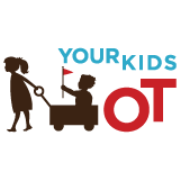
CindyChuan is a registered Occupational Therapist practising in Sydney Australia. She has two young children who are a constant source of inspiration and learning. Cindy loves working creatively to help children to reach their potential, finding opportunities in everyday living and making learning fun.
Cindy is the author of the Occupational Therapy blog Your Kids OT.
More great tricks:
Wow, what a lovely craft!
The craft had a photo of Miss 4 years on an elf body, with paper concertina arms and legs. Did you make that (Miss 4 years)? Um no, I did the folding! The sheepish teacher admits to me. This situation greets me more often than not and it prompted me to write this post. With school resuming in Australia very soon, this article is for teachers! If you see your teacher "guilty" of these things maybe you can prompt them with "why"? Also note, when I say "teachers", I'm also talking to OTs and parents who may also be "guilty" of these things! 1. Teachers PLEASE don't do the craft FOR your kids! This is my top gripe with preschool and school teachers. Kids do not need or want insta-worthy craft! Parent's don't want to see YOUR crafting skills (even if does make the classroom look beautiful). Kids need opportunities to snip, cut, rip, glue, fold and to make mistakes! They need to have craft opportunities where they can learn about spatial relationships (even it means legs are coming out of heads, arms are different lengths and tongues don't curl properly). Painting outside the lines means they can work out where things are in relationship with themselves. Manipulating glue stick lids or squeezing the PVA glue are opportunities for fine motor and hand strength development. Early opportunities for snipping and cutting will lead to smoother cutting and better manipulation of the paper with practise. Folding those paper planes and flying them, kids will learn that more accurate folds make better planes and should practise these fine motor skills. Rolling, tearing and scrunching paper are so important for bilateral coordination and fine motor development. At home, provide lots of craft materials for your kids to create, experiment and learn! You may not be "crafty" yourself or even like the finished product that your child produces (lets be honest here)... but it is not actually always about the finished product. Allow your child to work through the process. Need some ideas? Check out my "homemade arts of craft section". Each craft here is designed to be done by kids (with minimal help from adults). 2. Teachers PLEASE don't sharpen pencils for your kids! I'm sure this is a time saving thing, but teachers why not provide ordinary pencil sharpeners in the classroom?! They don't even make a mess as they have little containers to catch the shavings. I don't mean to be patronizing but I would love to see more pencil sharpeners in preschool classrooms especially. What an easy natural way to work on bilateral coordination and fine motor manipulation. So much of the "turning" action when sharpening a pencil is made by the thumb and index working together. What a perfect "pre-writing" activity! If your child is using their whole hand to turn the pencil, encourage them to do this with the thumb and index finger - it may take practise! As OTs we come up with exciting and creative ways to work on these skills, however such a simple thing as sharpening pencils regularly will help your kids to develop these skills! I may be including "pencil sharpening" as homework this year for my OT kids! Make sure you encourage your child to do this at home too! You will be surprised with how quickly your child might say "my hand is tired" as they are not used to using these muscles.
3. Teachers please don't expect good handwriting if your child is sitting in a plastic garden chair!
It has been a few years now since I worked in a school where the standard chair for students was a cheap plastic garden chair with arms rests. These chairs were horrible for posture at a desk. The arm rests did not allow the chair to go under the tables, the child was either sitting back in a slouched position or sitting right on the edge at the front of the chair so they could rest their arms on the table. The chairs easily tipped and were difficult to move in and out of the table. Other schools may not be as bad with the chairs provided, however I do want to remind you that posture is important. Children should be able to comfortably place both feet on the ground and the table should be slightly higher than their bent elbows without elevating their shoulders. Children should also have enough space so they are not "on top of" the child sitting next to them. Check your tables and chairs at home too! Check where your child may be doing any "table top" work. The dining table may be a great option but often kids have their legs dangling and their arms are uncomfortable as shoulders are elevated so that they can reach. Small children may work better at a coffee table whilst sitting on an ottoman or cushion. You may want to invest in an adjustable table and chair that grow with your child. You will find out the importance of posture and gross motor skills in "THE HANDWRITING BOOK" which is currently being launched! Apply the launch week discount code: HANDWRITINGHELP1
4. Teachers please don't take away writing lines too early!
Removing writing lines too early is like removing the lane marks on a road and expecting people to drive within the imagined lanes accurately. Some people can do it, but many can't! (OK - A slight exaggeration but you get the picture!) Writing on lines provides children with a visual guide as to how to position letters. They can work out the size of letters and how they are positioned in relation to each other within a word and a sentence. When you remove the lines, kids need to be able to visualize how tall letters need to be and even how to write in a straight "line". Yes they need to know how to visualize this themselves - but at what age? Often when I see children in year 1 or 2 or even older who have handwriting legibility difficulties, I need to give them the "lines" back to help with the visual spatial and organisational skills. I use my "earth paper" to provide a strong visual guide and then we work back to needing less lines. You could also use grid paper to help with organisation and spacing. 5. Teachers please don't punish kids by making them sit still or keeping by them in from recess or lunch. Research shows that kids need opportunities for movement, exercise and fresh air. The American Academy of Pediatrics (2012) make the following recommendations about the need for recess.
In conclusion the AAP state "recess should be considered a child’s personal time, and it should not be withheld for academic or punitive reasons". Any teachers, OTs or parents guilty of some of these things? I love working with my "teacher" friends and colleagues! I count many teachers as very good personal friends! Please don't take this article personally. I did have a good chuckle with the teacher I mentioned in my introductory story! She "knows" where I stand with letting kids do the "craft"! Let's go "BACK TO SCHOOL" in 2017 with a fresh look at how we "help" our children with their development and learning!
This article is part of the 2017 Aussie Back to School Blog Hop!
Read the "back to school" articles here by some wonderful Australian Bloggers! You will find out how the first time school mums are feeling, tips for special needs parents, great lunch box ideas as well as suggestions for those who don't like crunch and sip! Teachers Please Don’t! | Your Kids OT Advice For First Time School Mums From Seasoned Mums and Teachers | The Multitasking Woman 10 simple ways to make school lunches more fun | Kidgredients Teacher Types Top Tips for Going Back to School | Teacher Types Maintaining a Play Filled Routine throughout the School Term | Kids Play Space 5 Must Have Items for Starting Day Care | My Bored Toddler Handling Crunch and Sip with Fussy Kids | Play With Food How to share your child’s special needs with their new teacher | My Home Truths 16 things the school holidays have taught me | Eenie Meenie Miney Mum The Most Important Skills Your Child Needs for School | The Happy Me Shop 101 Sandwich Filling Ideas for Kids | Create Bake Make
Reference:
The Crucial Role of Recess in School. (2012). Pediatrics, 131(1), 183-188. doi:10.1542/peds.2012-2993 |
AuthorHi, I'm Cindy and I am an Occupational Therapist. I enjoy working creatively with children to see them reach their potential. Read more about me here. SEARCH THIS SITE
Archives
June 2024
Categories
All
Popular Posts |
Join the YKOT e-newsletter!
Subscribe to get our latest content by email and receive
the SHAPE ROADS PRINTABLE NOW!

Success! Now check your email to confirm your subscription and receive your free printable!
Join our Mailing List!
Subscribe to get our latest content by email and receive
the SHAPE ROADS PRINTABLE NOW as a thankyou!

Success! Now check your email to confirm your subscription and receive your free printable!
Disclaimer: The information on this site is general in nature and should be used for educational and entertainment purposes. The activities are safe for most children, however, you should consult an Occupational Therapist or health professional to address specific movement, sensory or other medical conditions. This blog does not replace formal therapeutic professional advice given by a health professional or medical practitioner. Reviews and endorsements of products will only be made based on my expertise and personal opinion; and deemed worthy of such endorsement. The opinions shared in sponsored content will always be my own and not that of the advertising company or brand. Content, advertising space or posts will be clearly identified if paid, affiliated or sponsored. Affiliate links may be found throughout this website in advertising. This means that if you follow through with a purchase from these links, Your Kids OT will receive a percentage of the sale. Your Kids OT undertakes to meet the requirements of the "Social Media Policy" as published by Australian Health Practitioner Regulation Agency (AHPRA). Further information about this policy can be found here.
Find meFollow me |
About me
AuthorHi, I'm Cindy and I am an Occupational Therapist. I enjoy working creatively with children to see them reach their potential. Read more about me here. |
Copyright © 2017 Your Kid OT

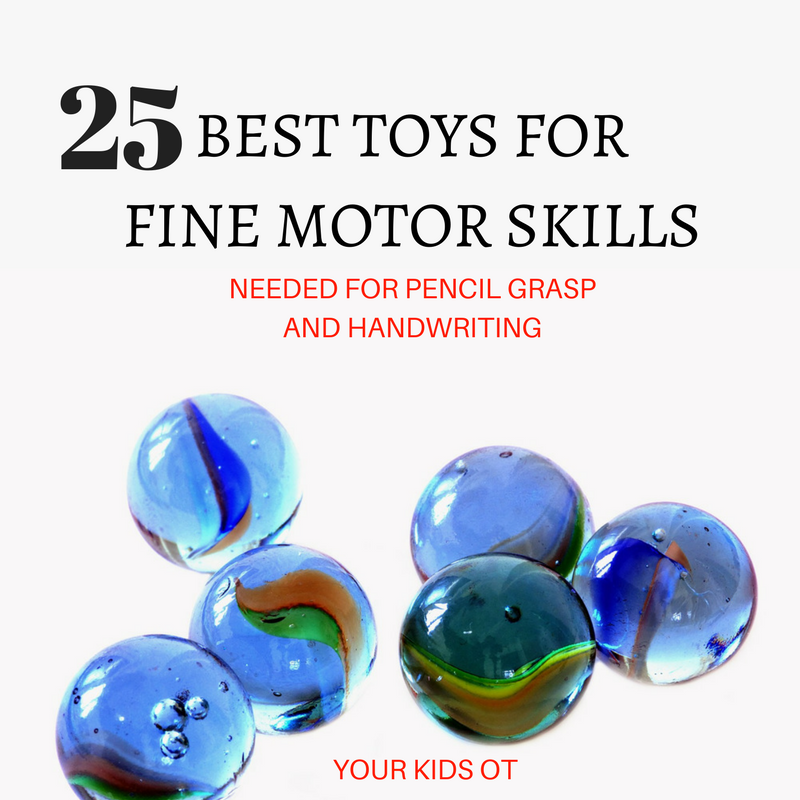
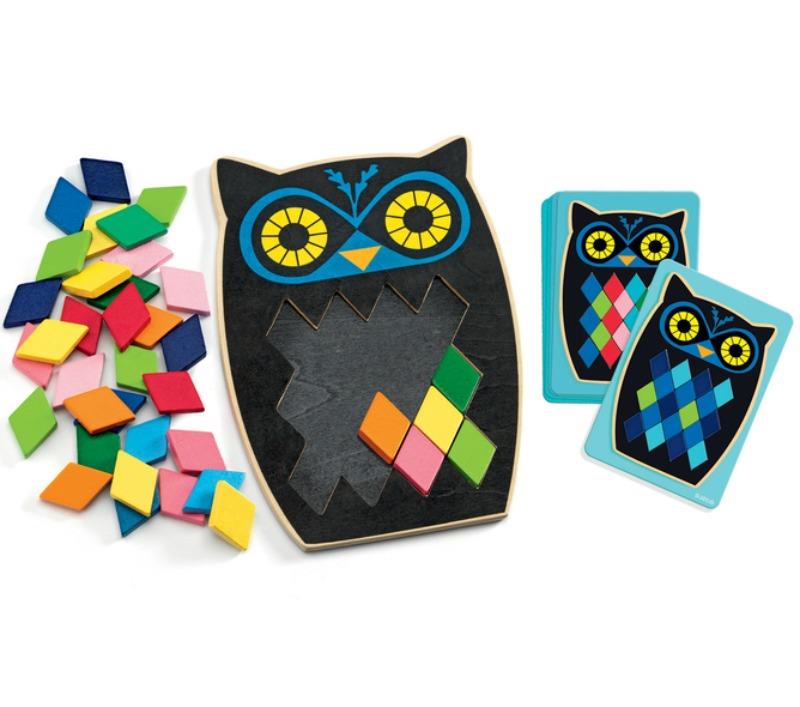
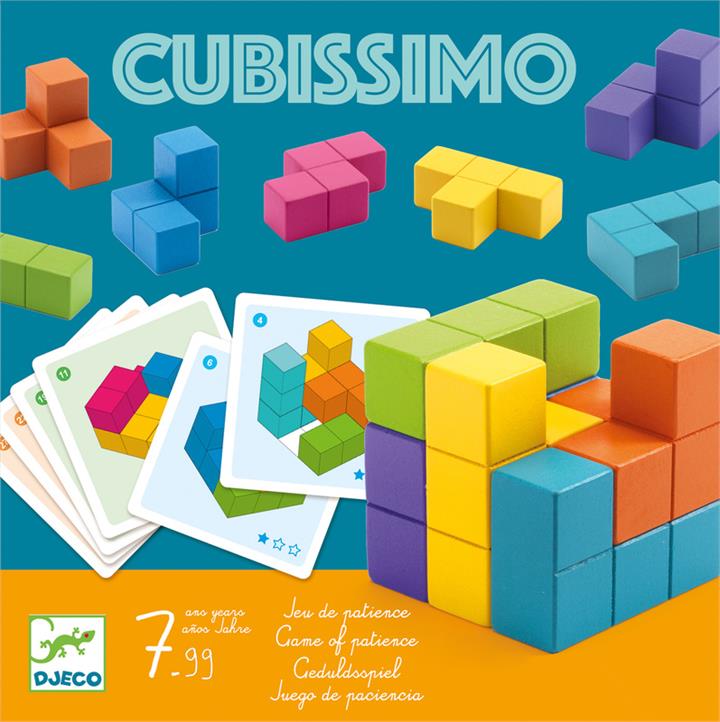
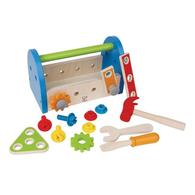
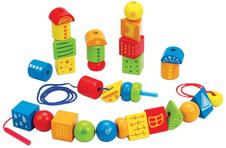
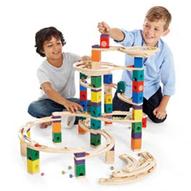
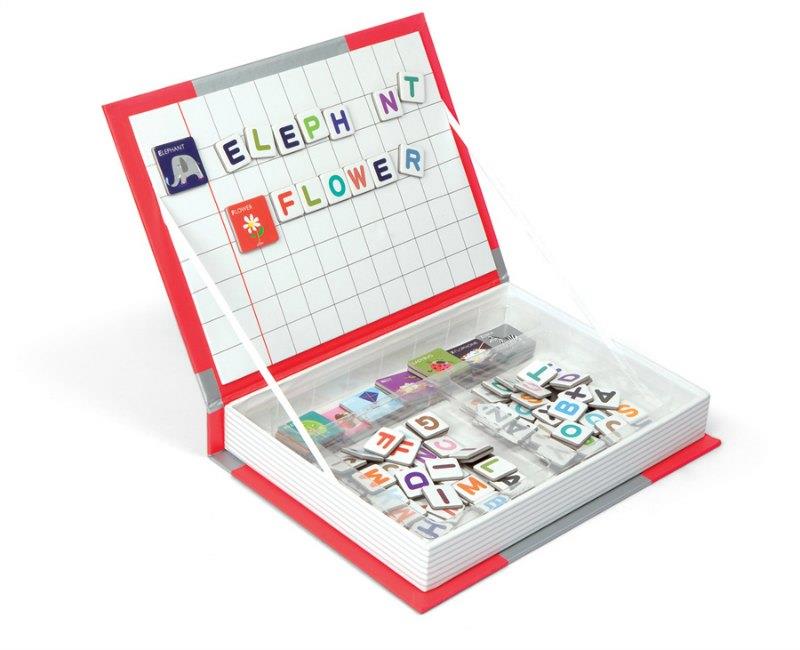

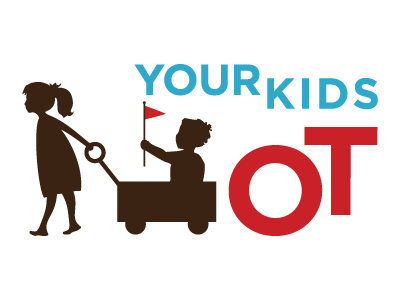
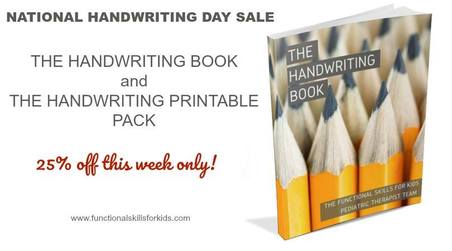
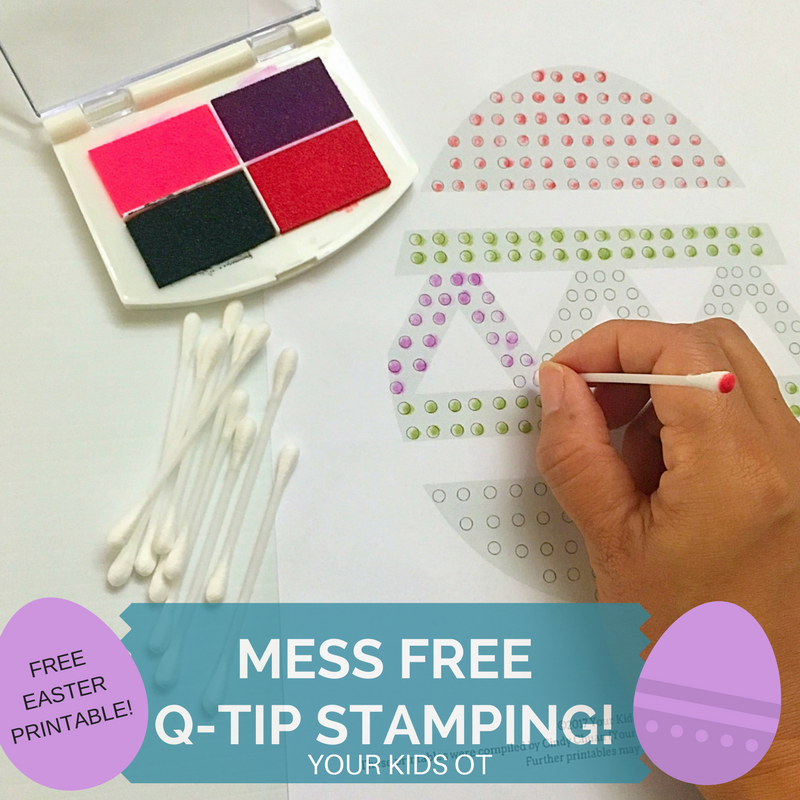
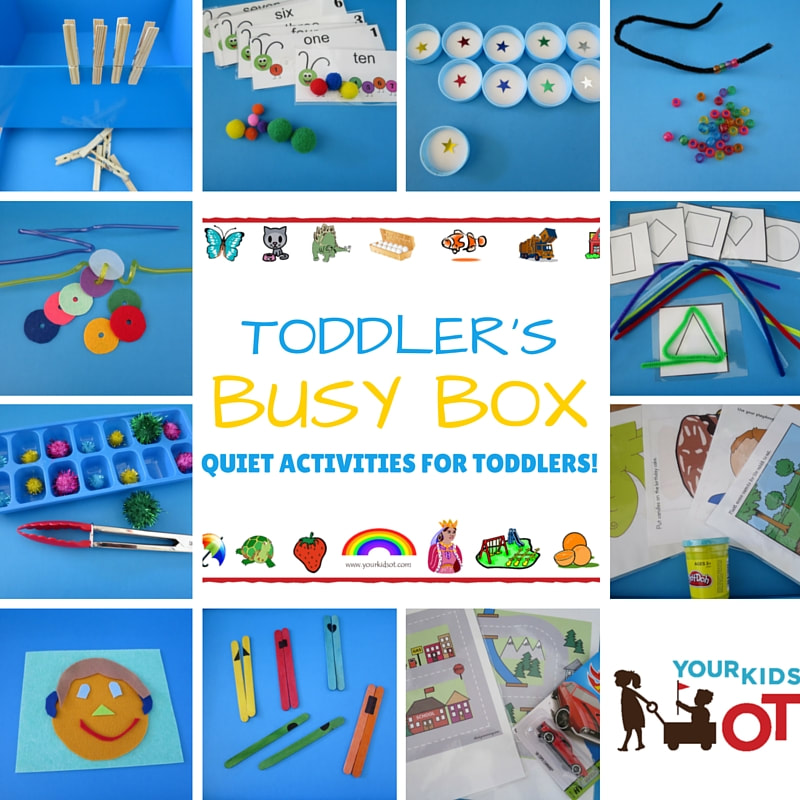
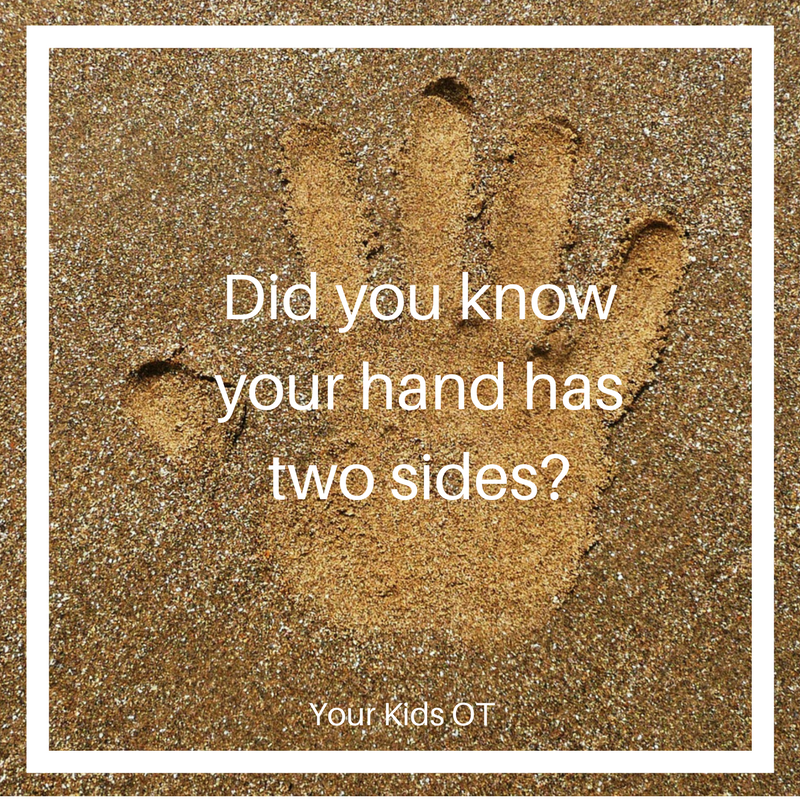
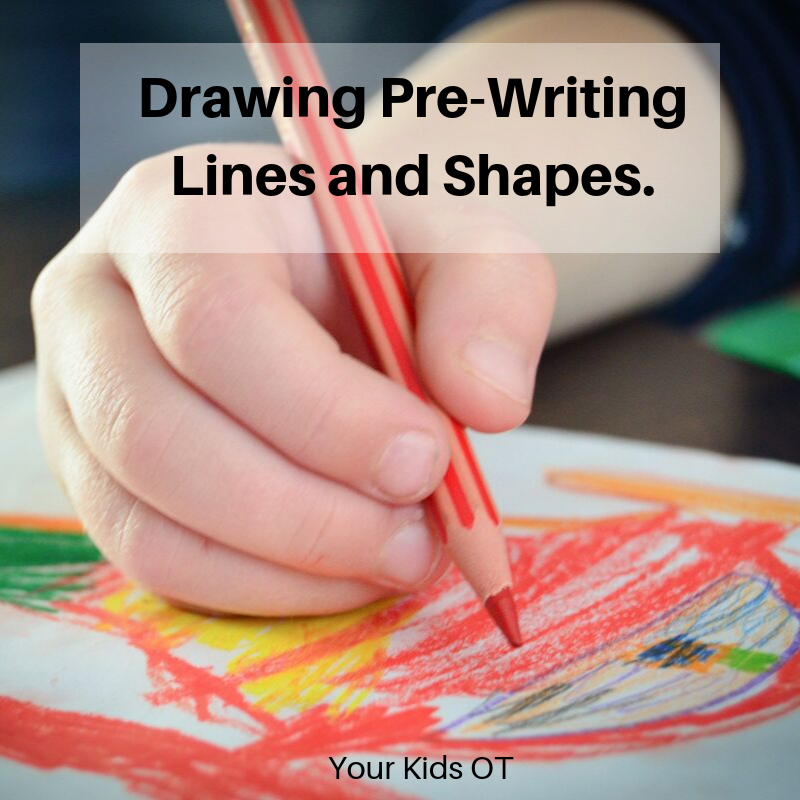
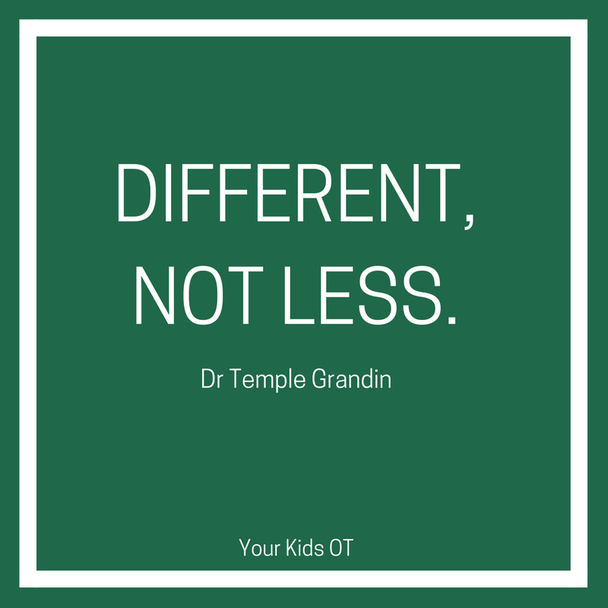



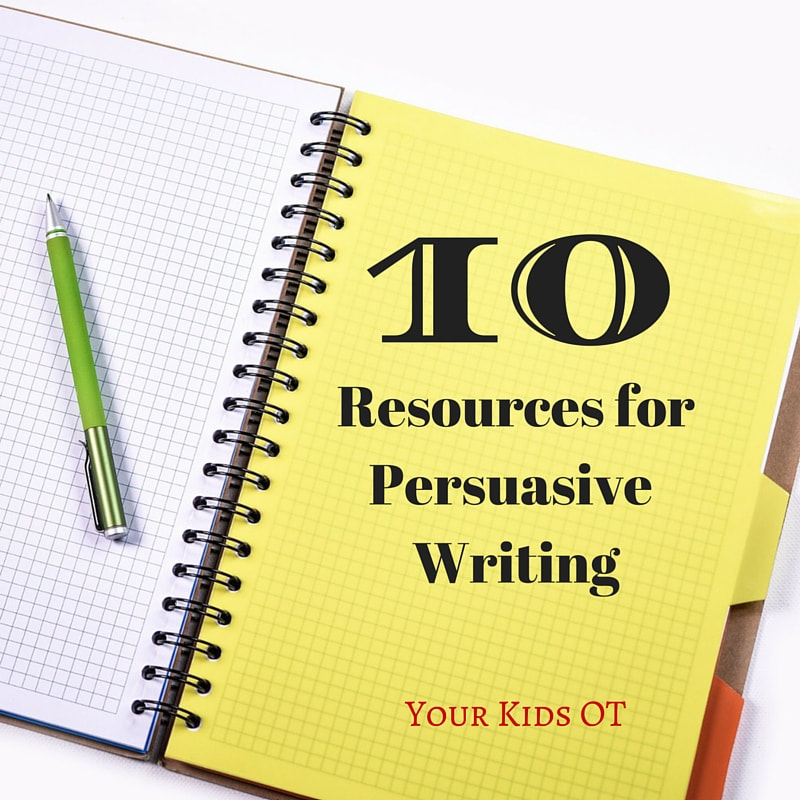
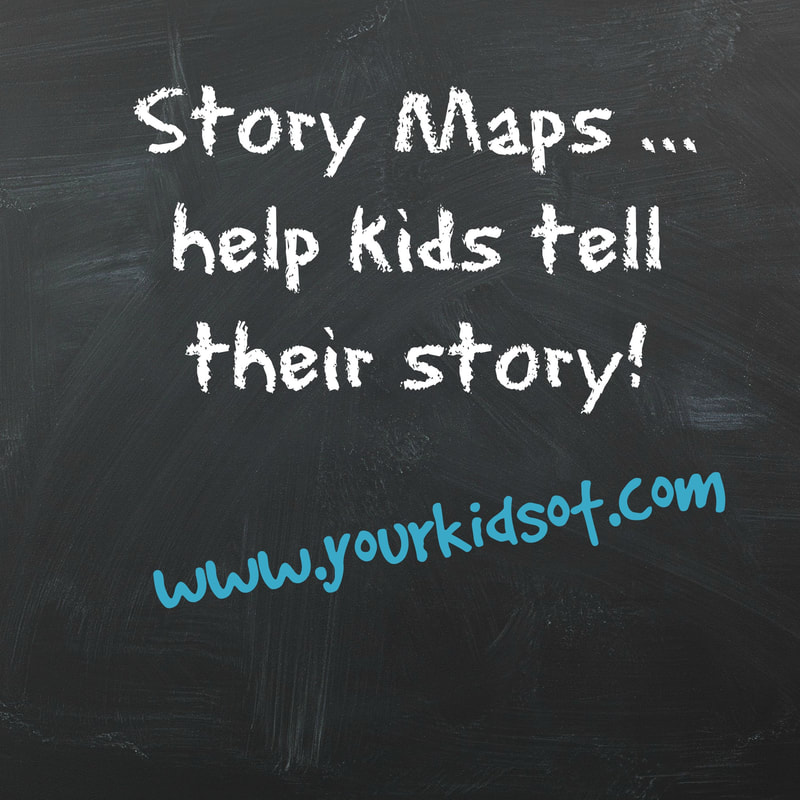
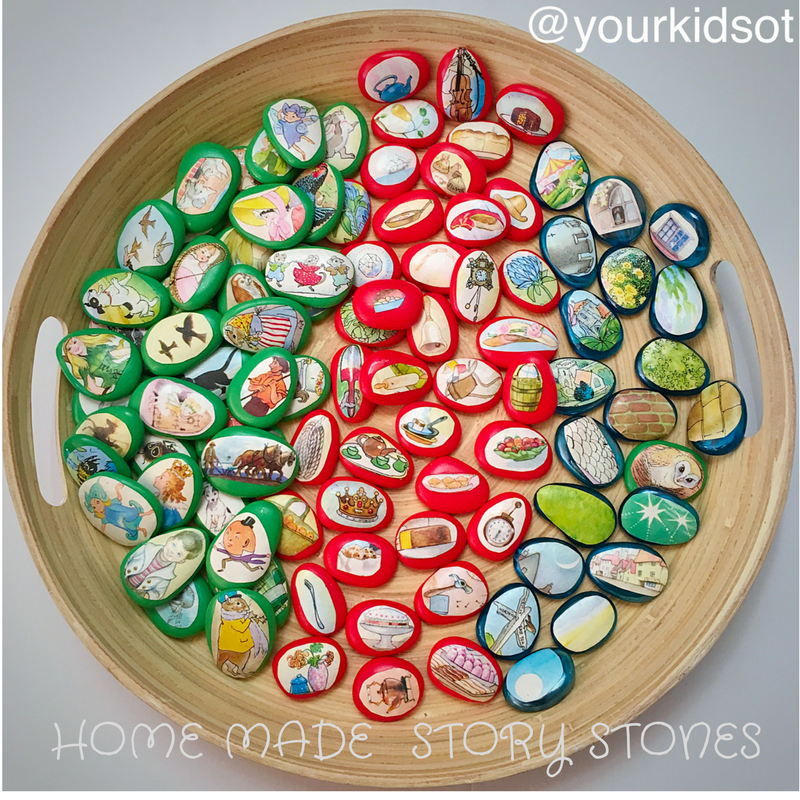
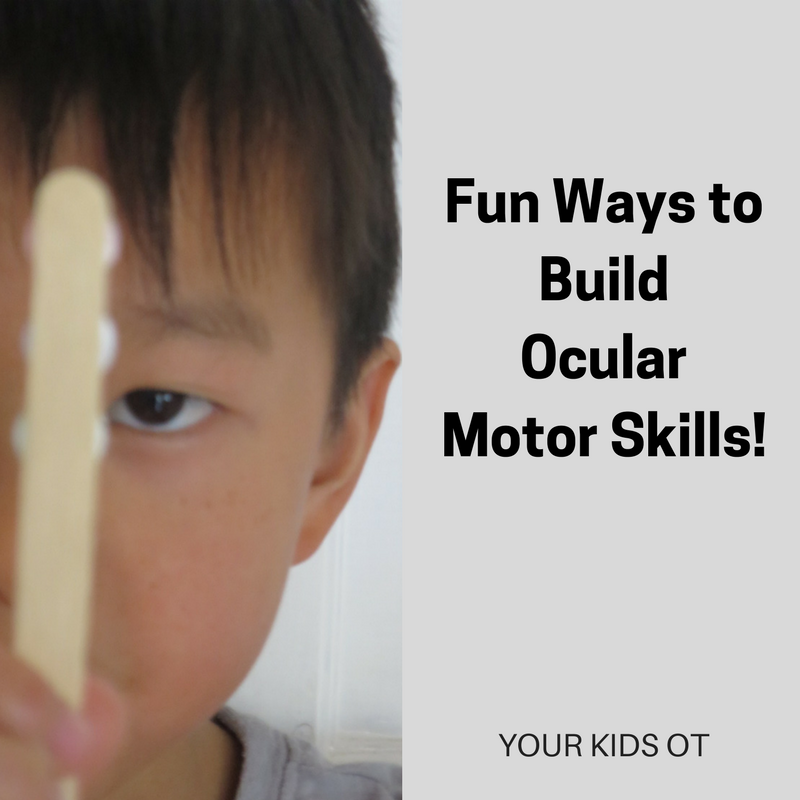
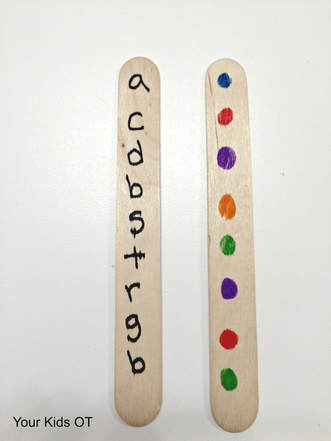
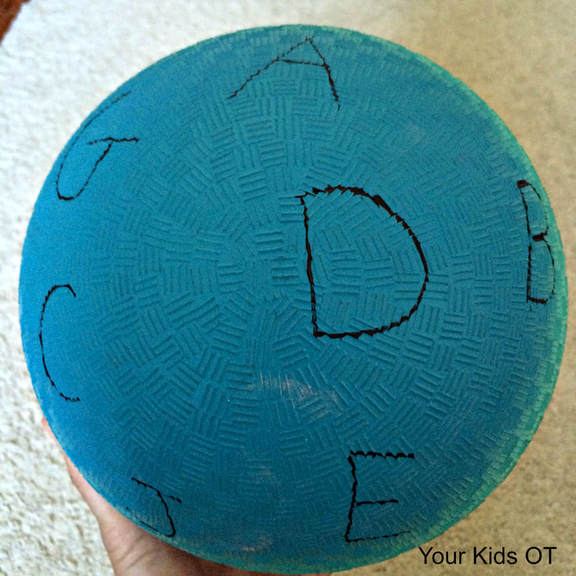
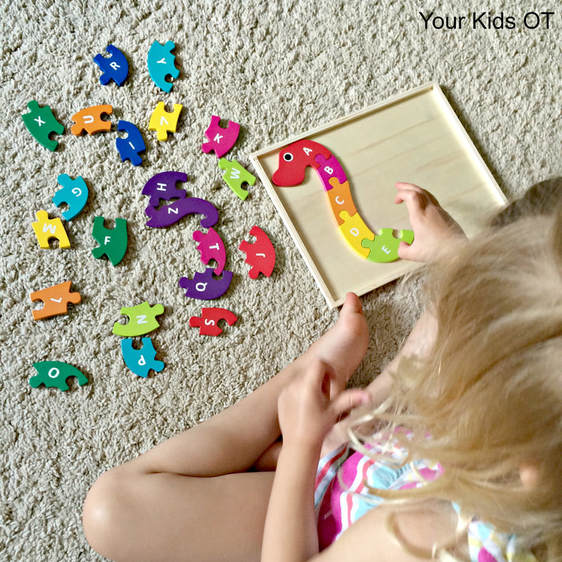
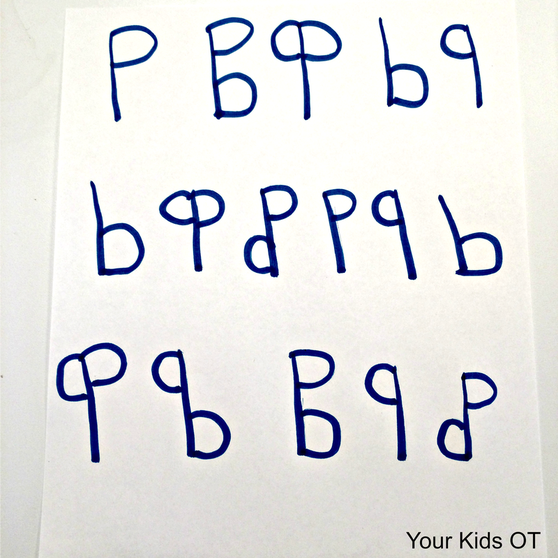

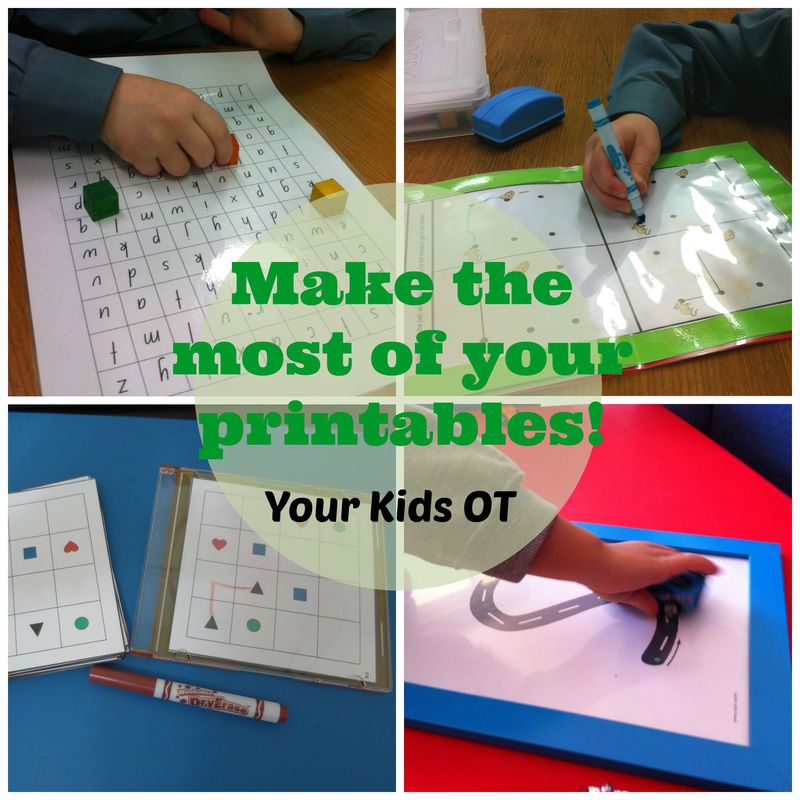
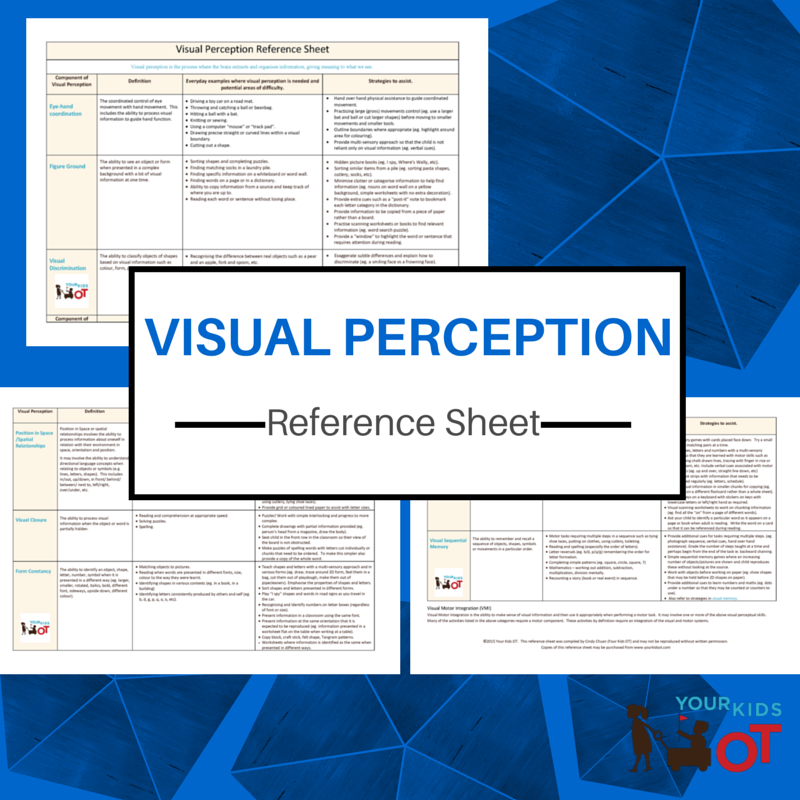
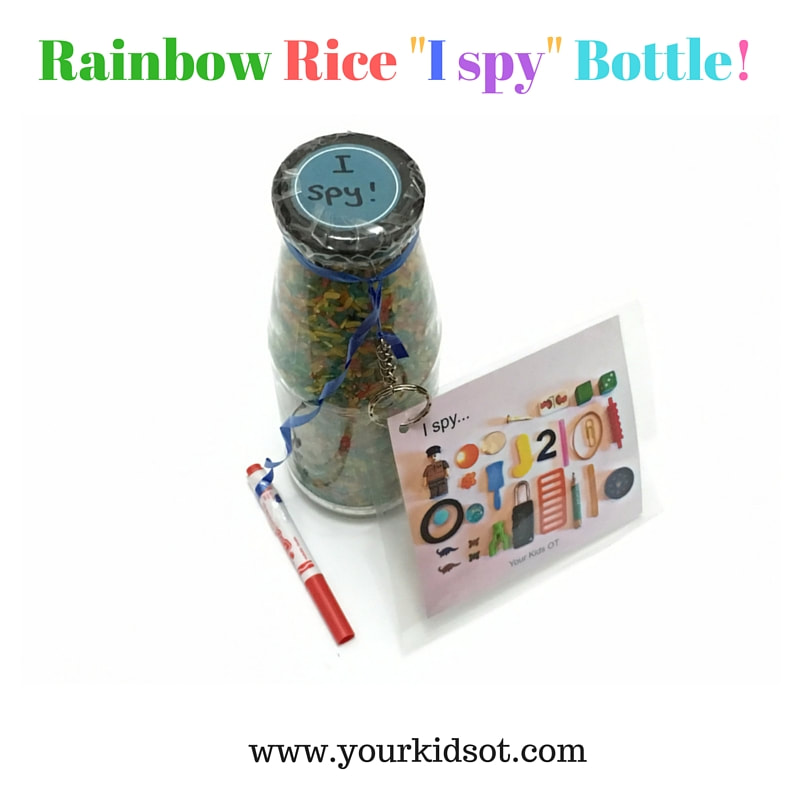
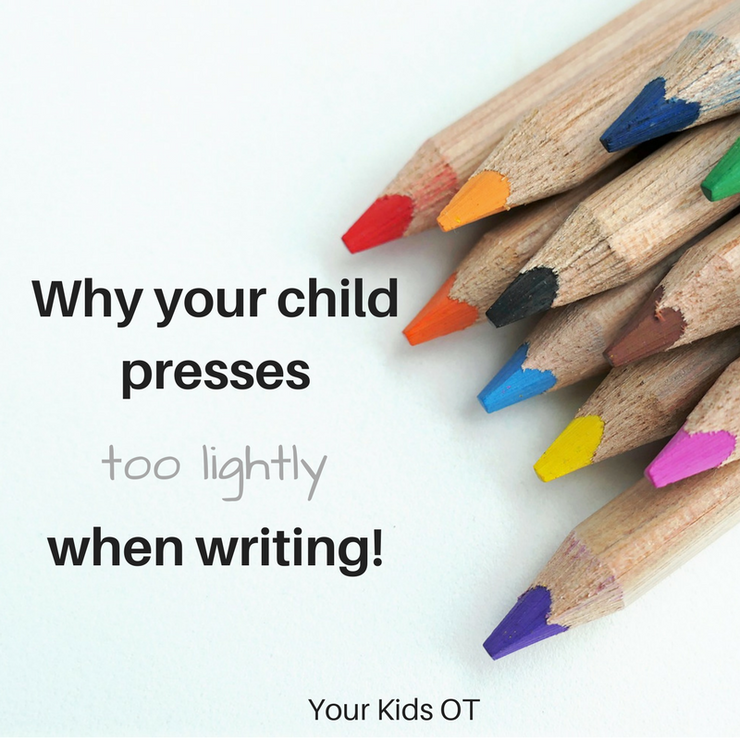
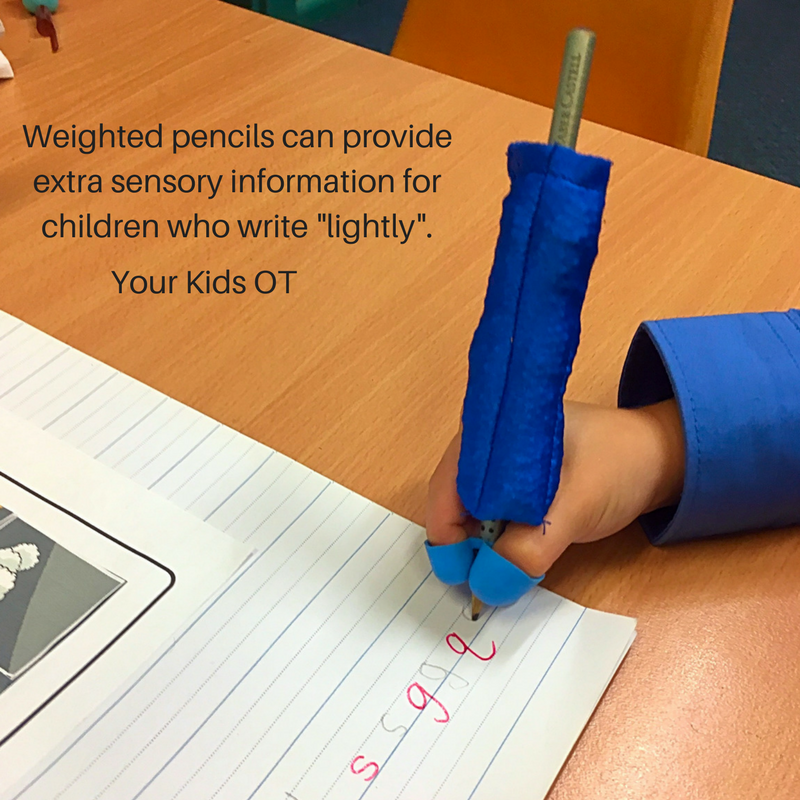
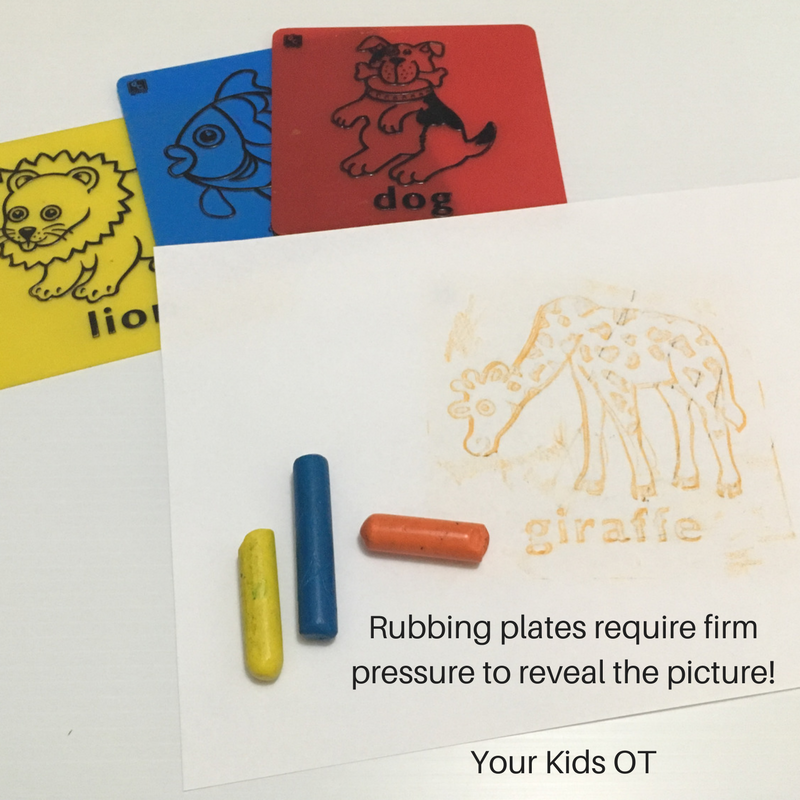

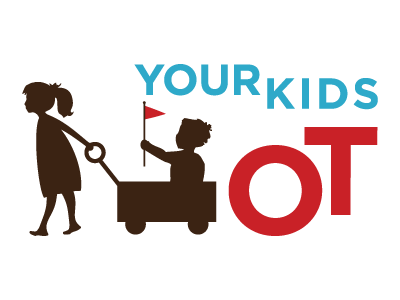
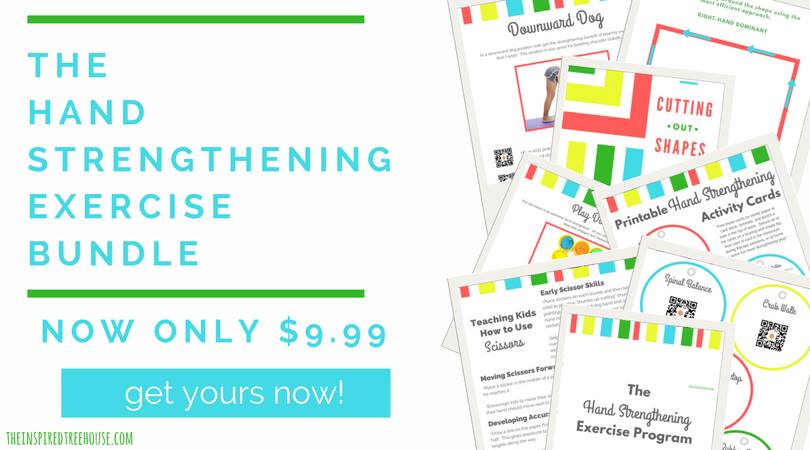
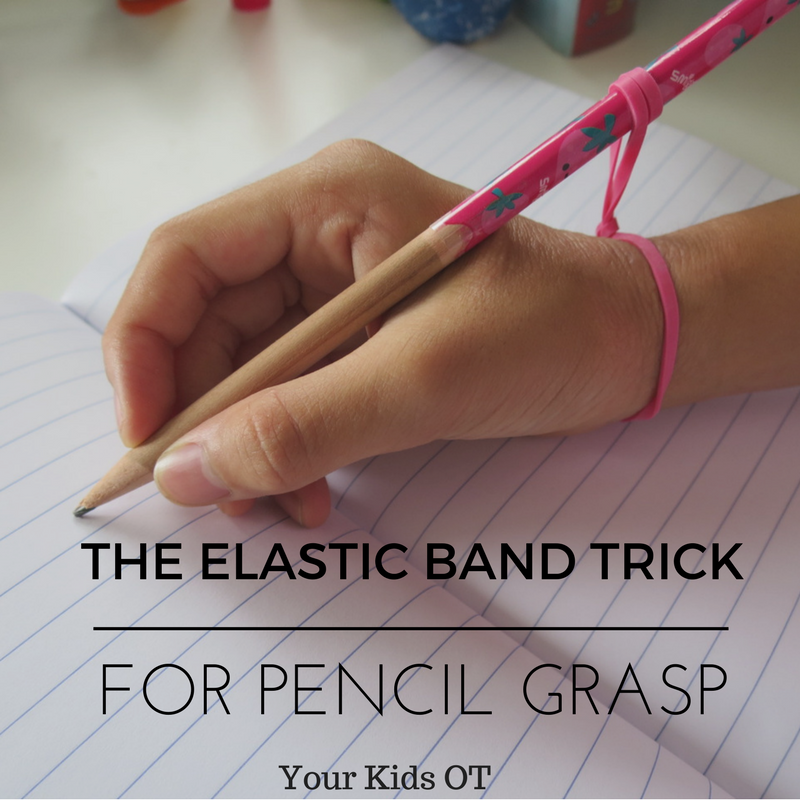
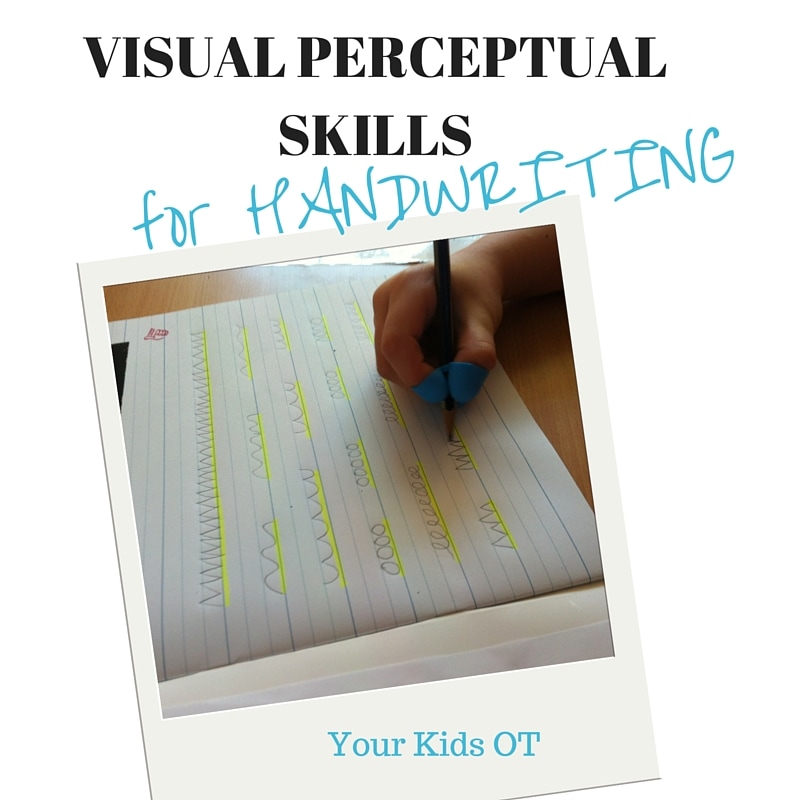
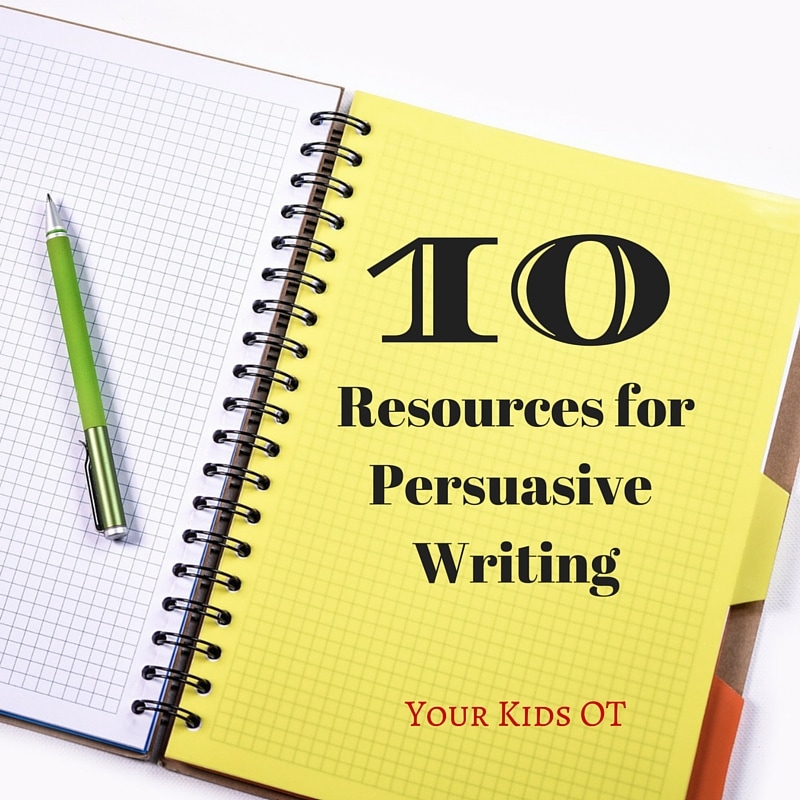
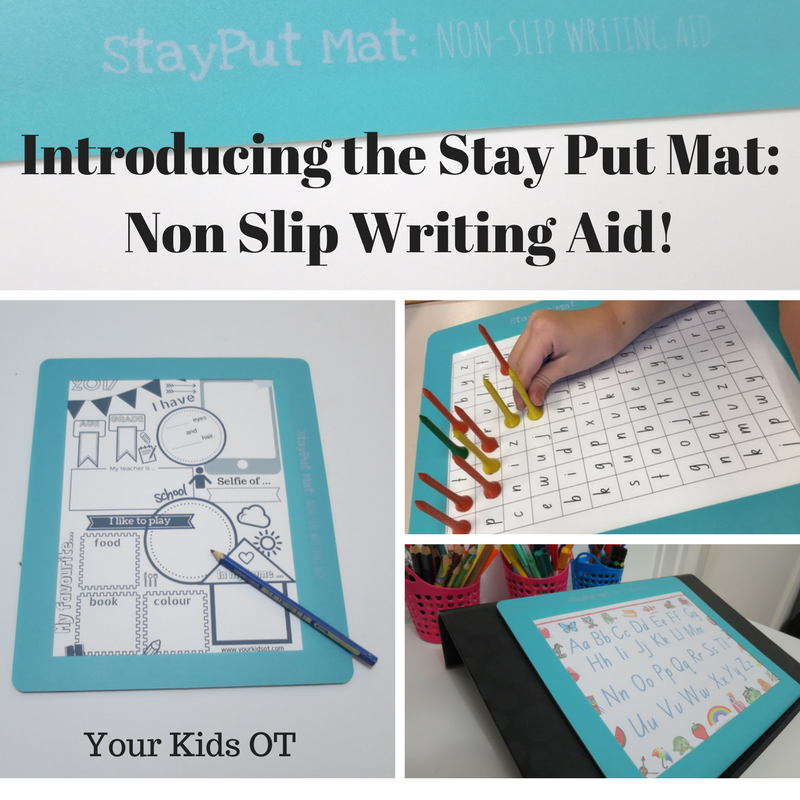
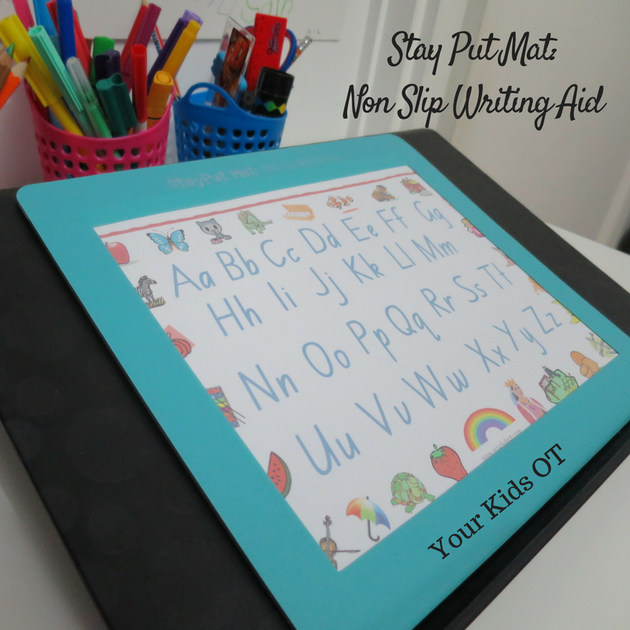

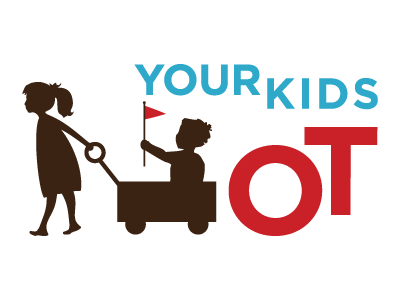
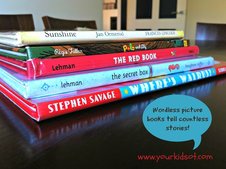

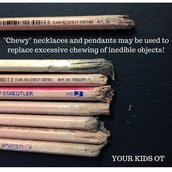
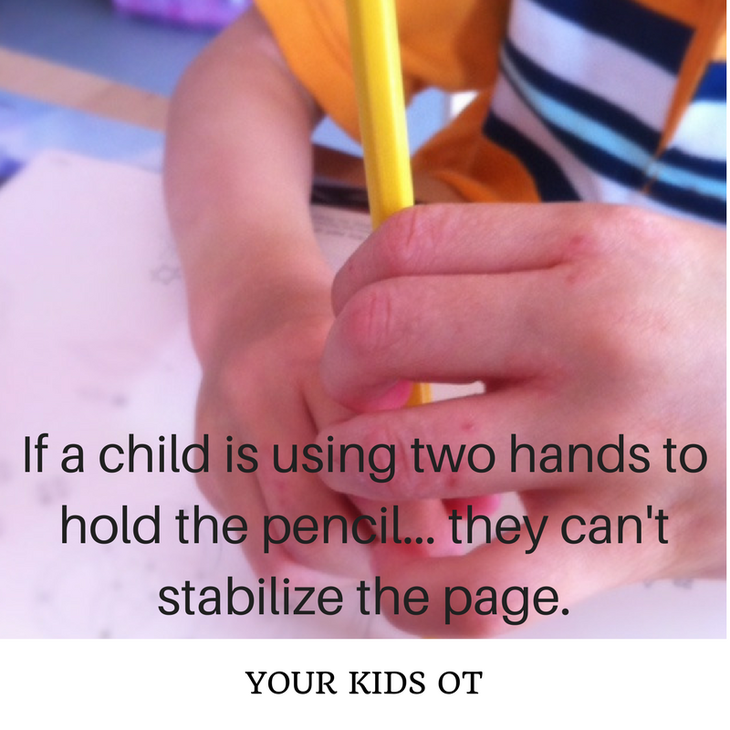



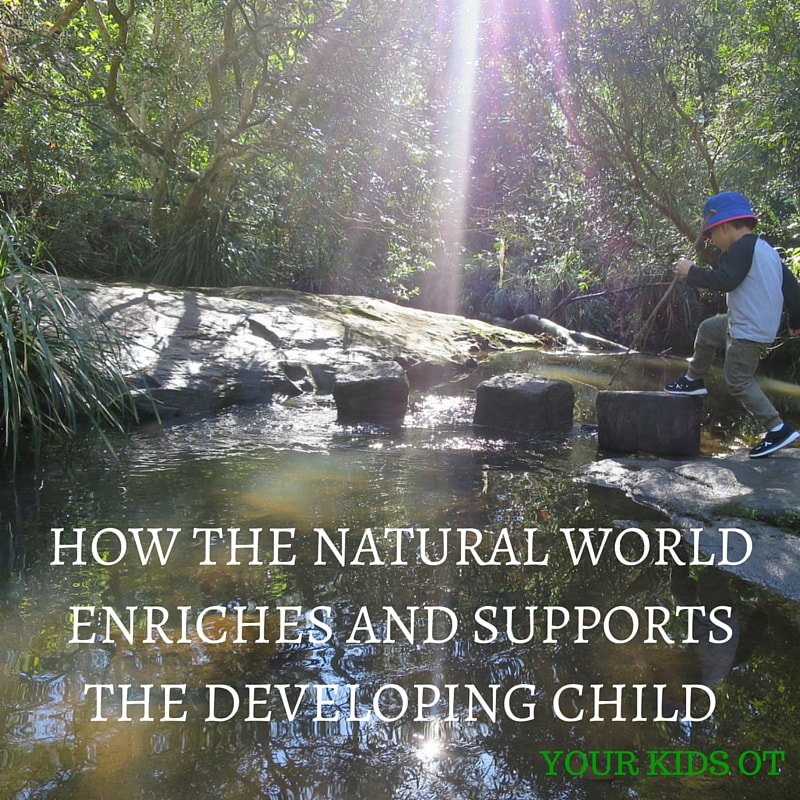
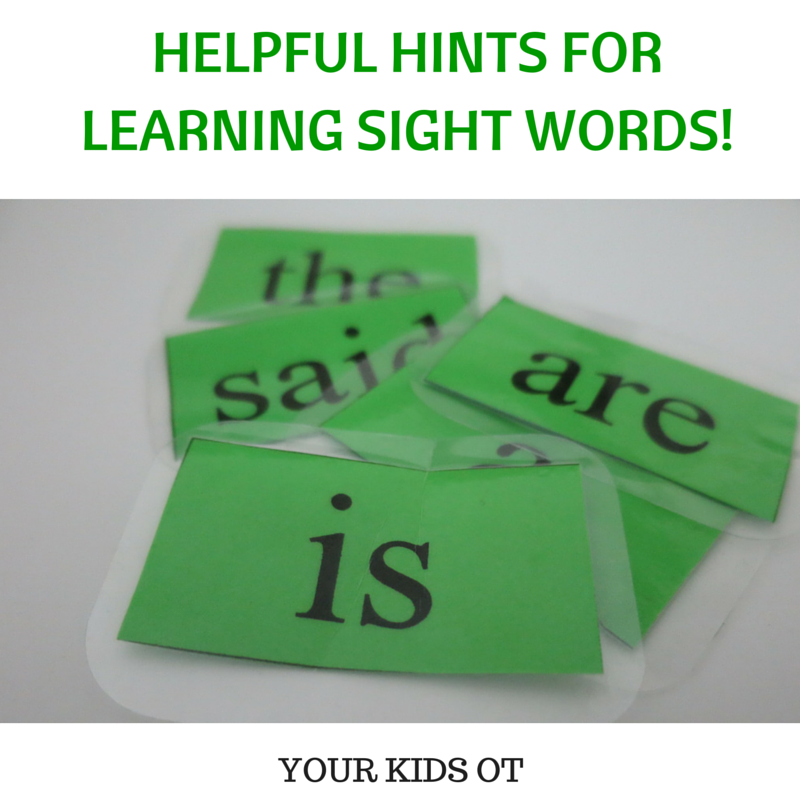
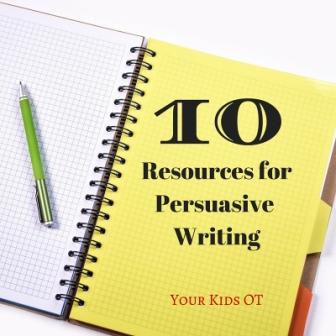
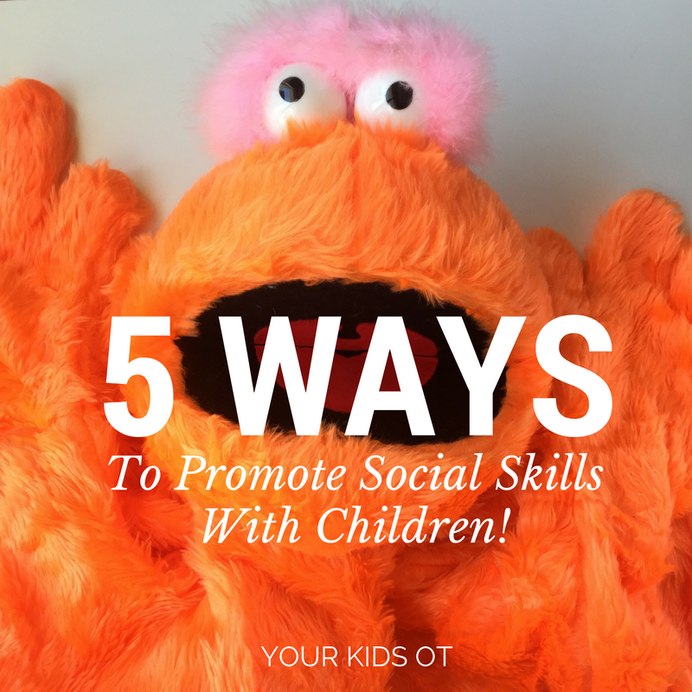
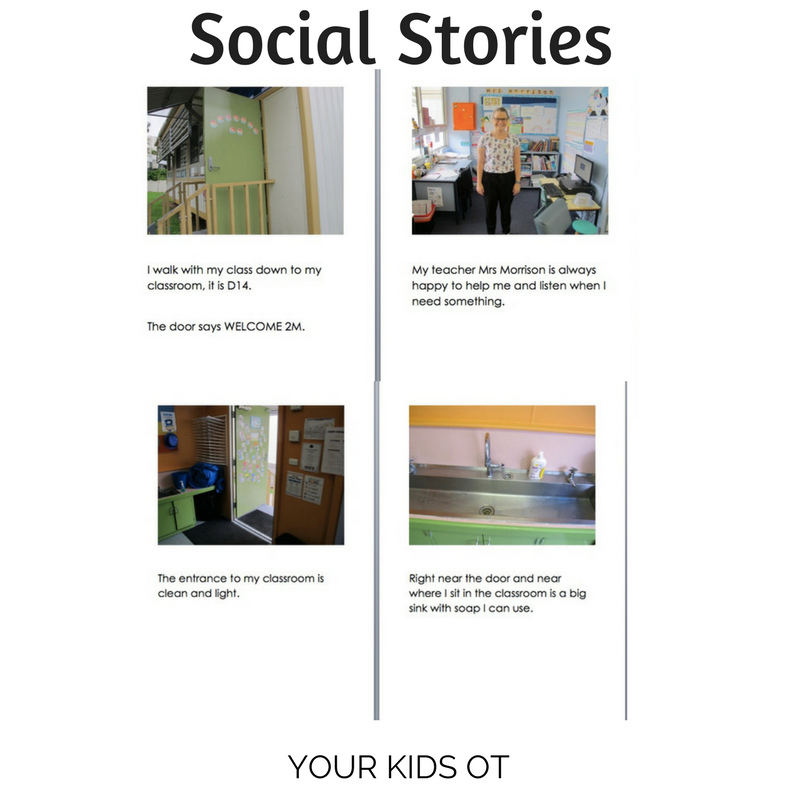
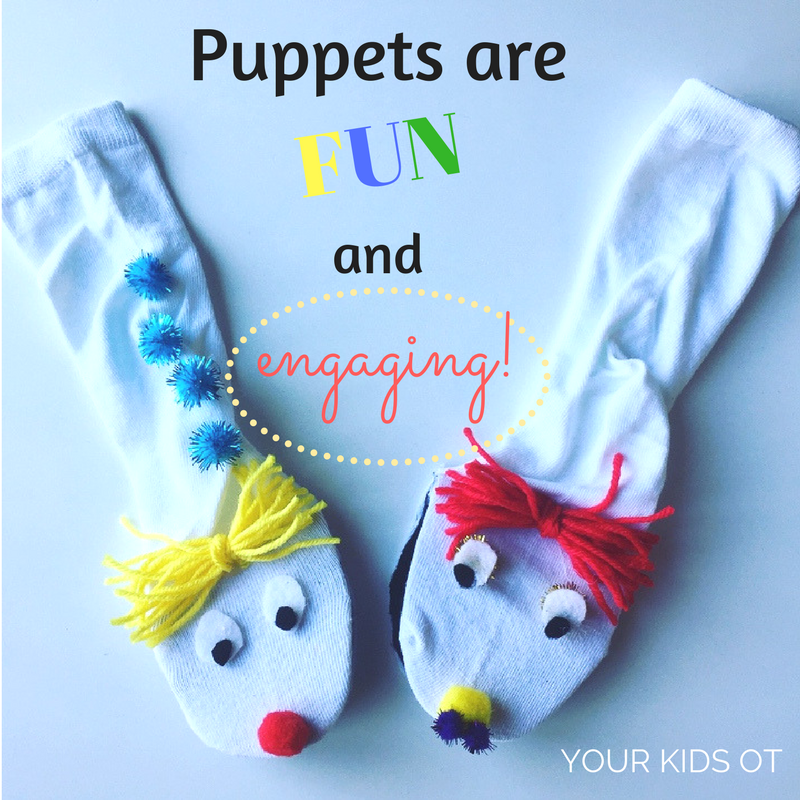

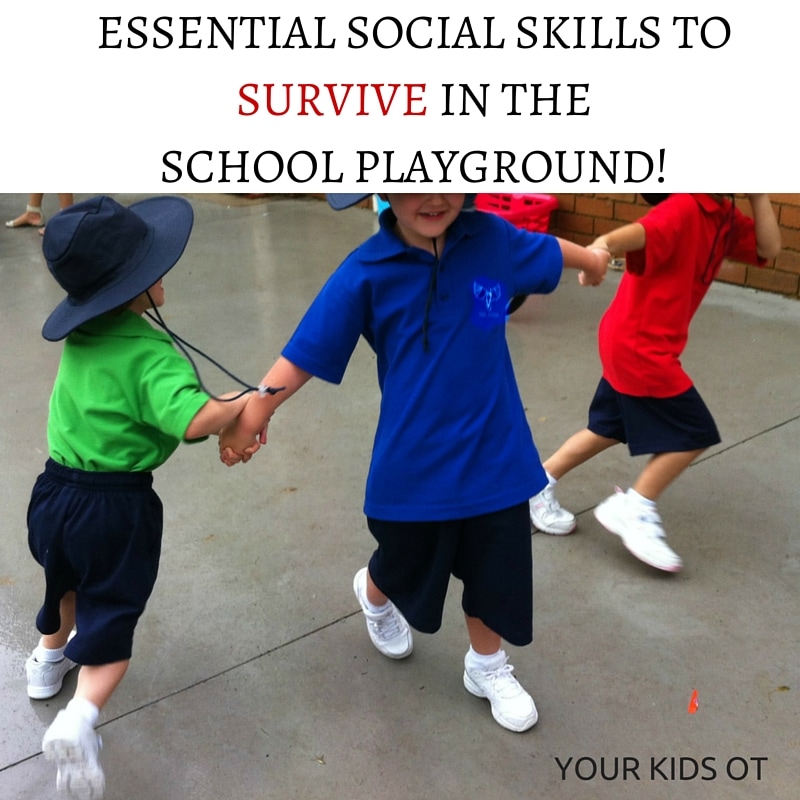
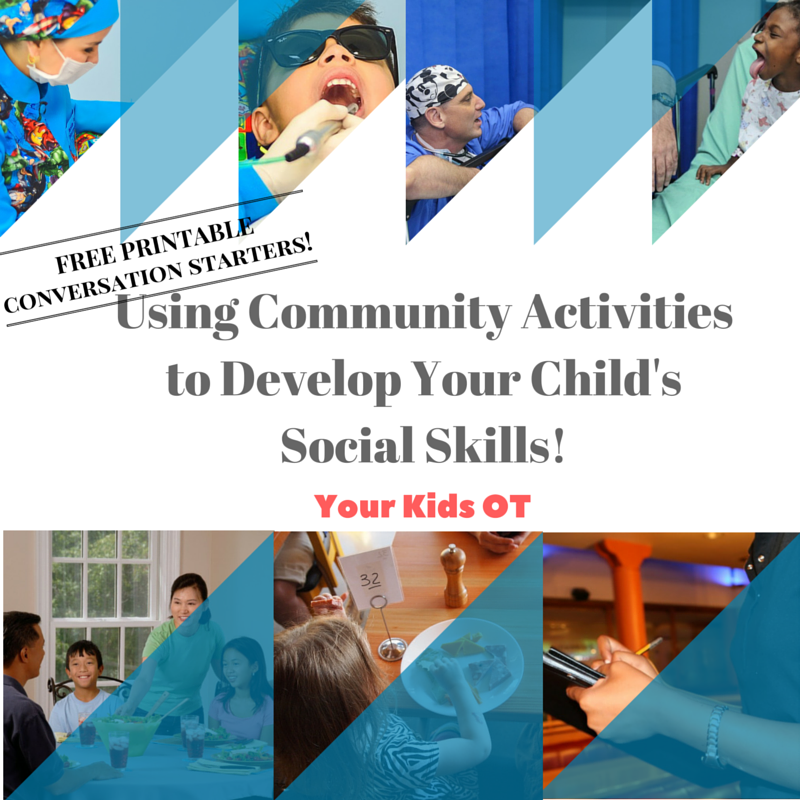

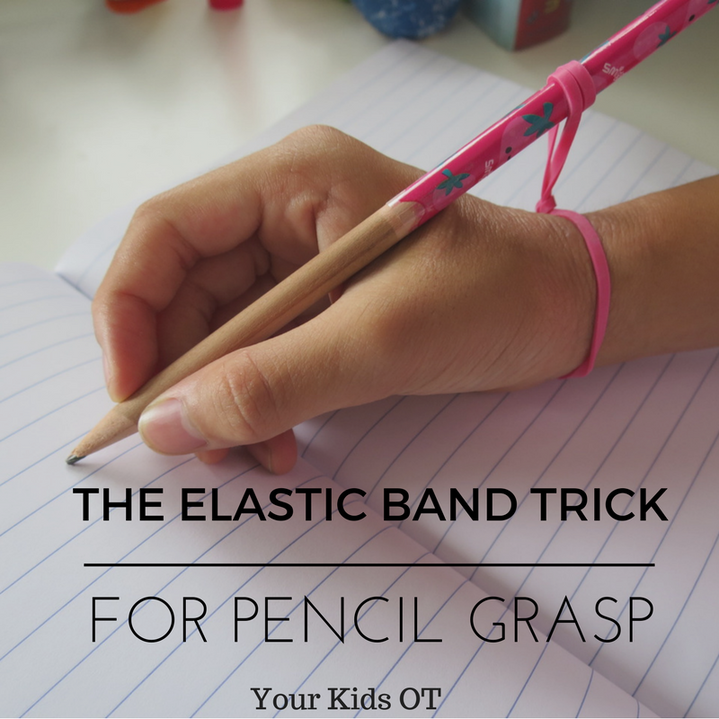
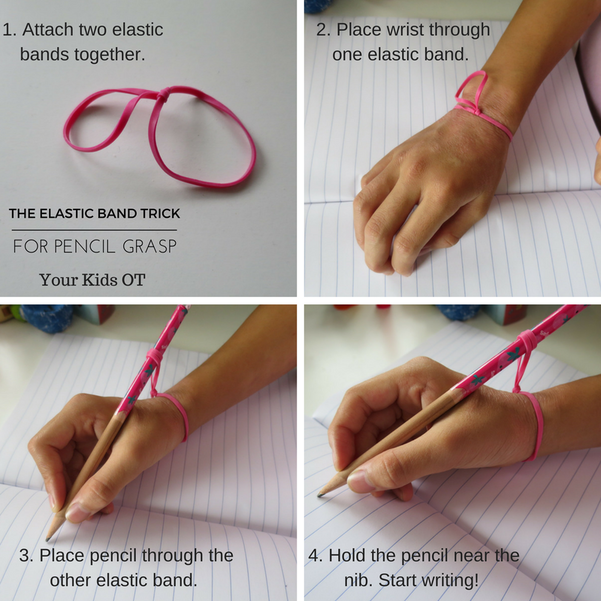
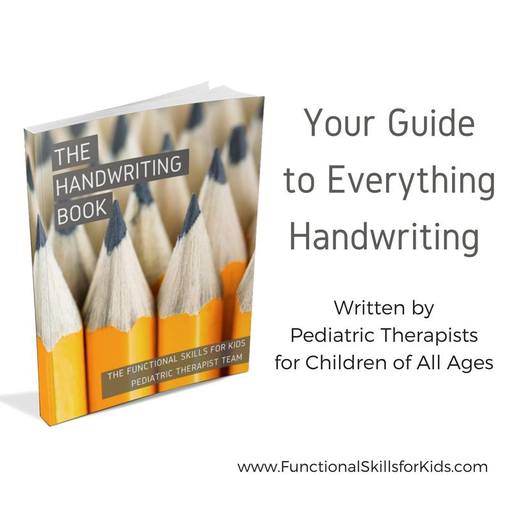

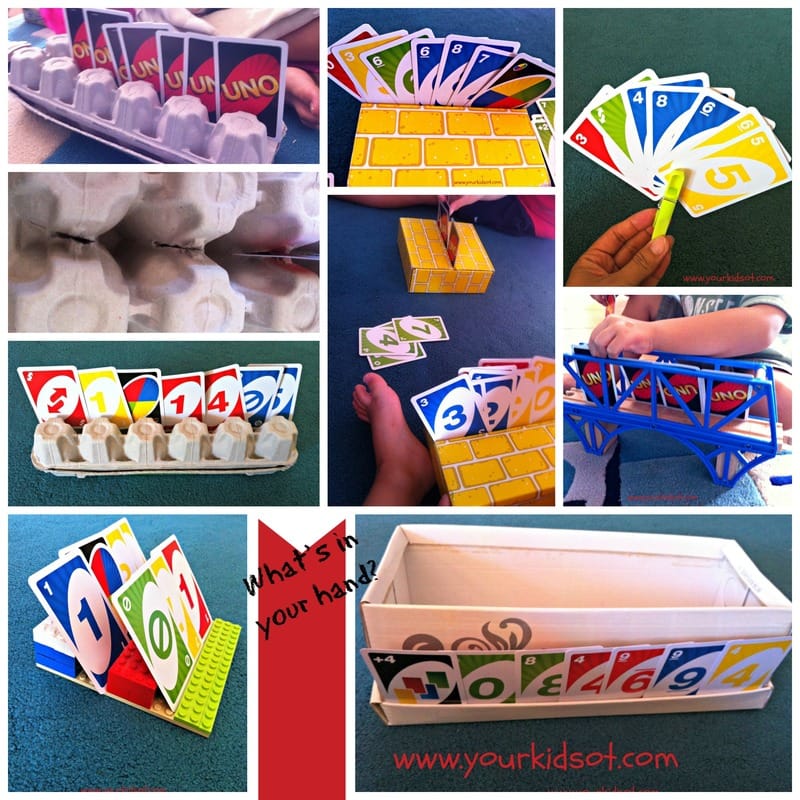
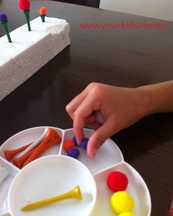

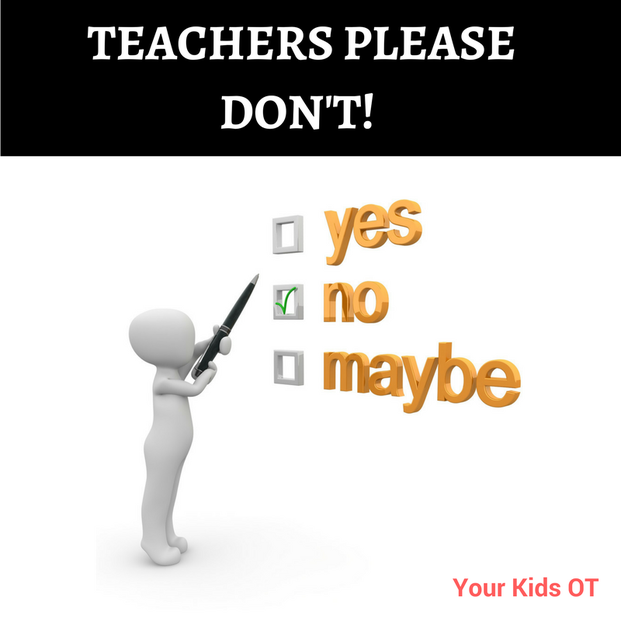
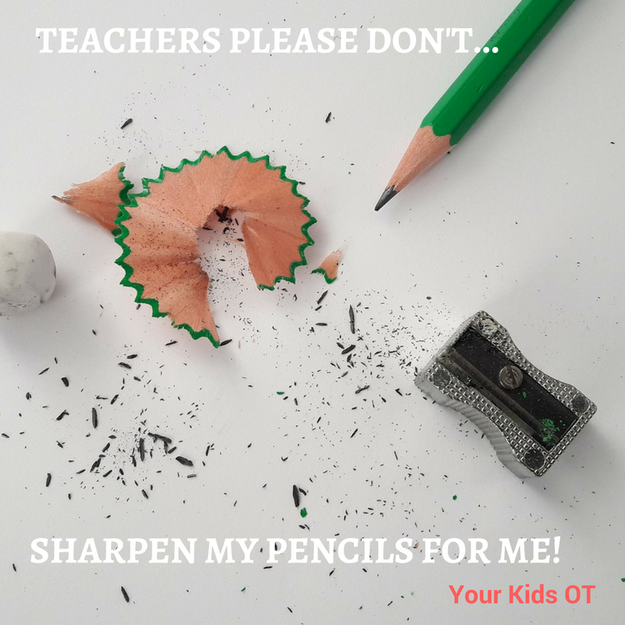
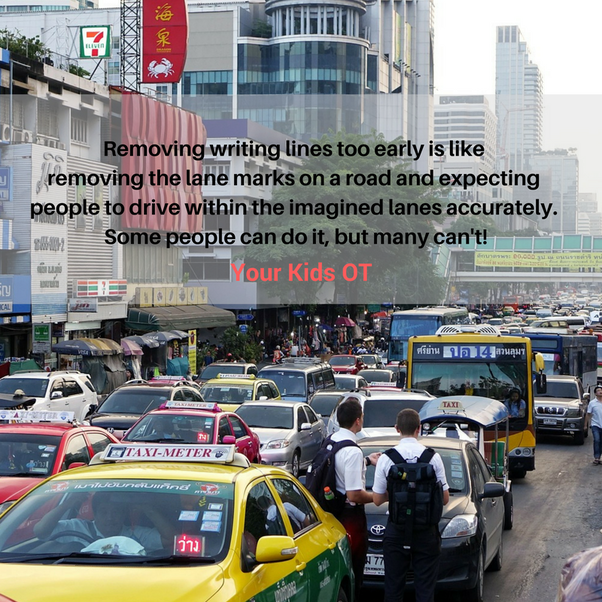

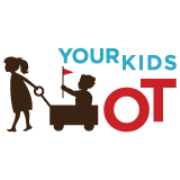
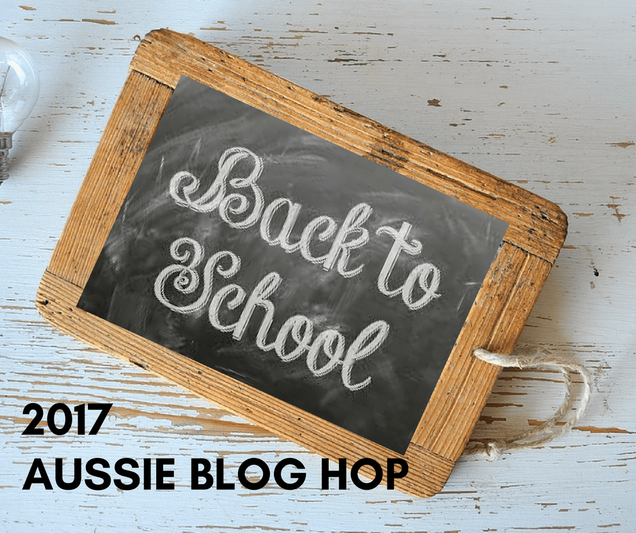

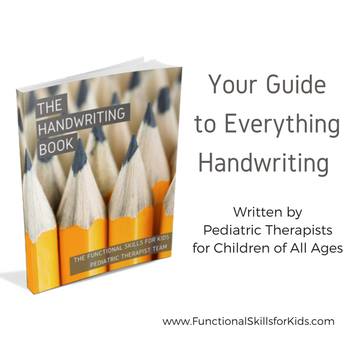
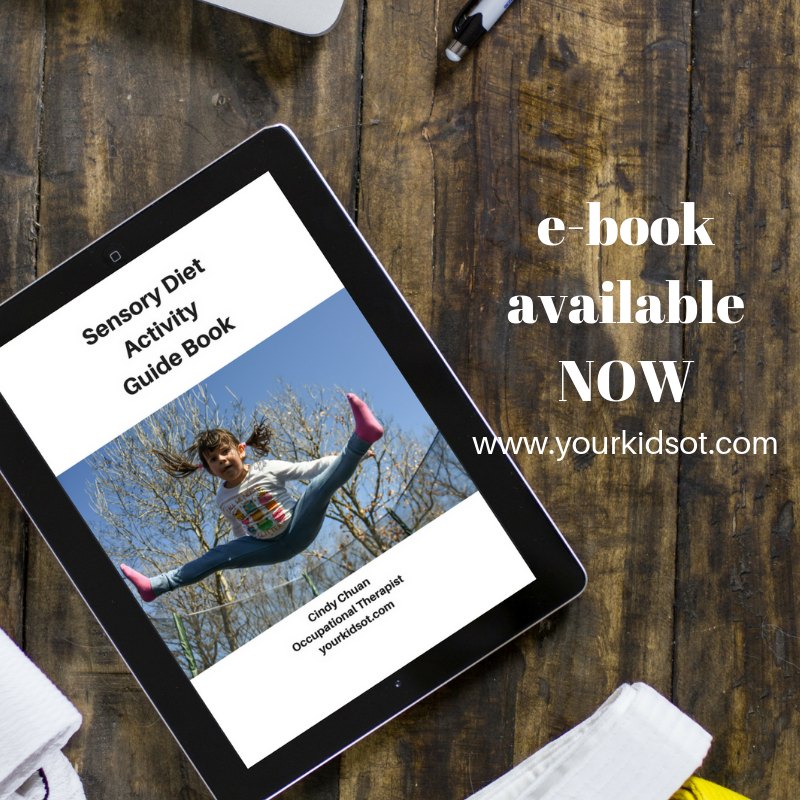
 RSS Feed
RSS Feed
